Archeology is a fascinating subject. It has helped us understand the history of many cultures around the globe. It’s the reason why we know our origins and have a good understanding of how our world progressed.
On top of all that, it also helps us to connect to the people form the past. When we look at the work they’ve done, the craftsmanship of the objects, the beauty of portraits and statues, we feel kinship and understanding. It allows us to relate to them on a new level. The pictures of artifacts and features in the list below do so perfectly. Scroll down to admire the wonderful findings.
#1 A 1st Century Ad Head Of A Cyclops From The Roman Colosseum
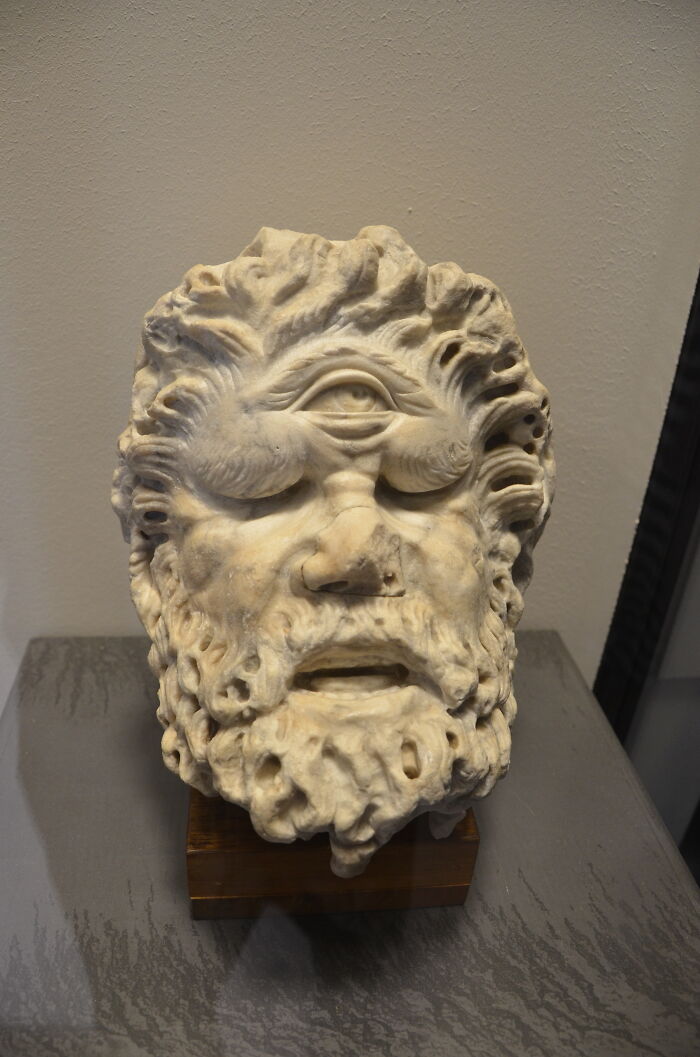
Image credits: Antique Archeology
#2 This 14th Century Door At Exeter Cathedral, UK, Is Thought To Be The Oldest Existing Cat Flap
A cat was paid a penny each week, to keep down the rats and mice in the north tower, and a cat flap was cut into the door below the astronomical clock to allow the cat to carry out its duties.
Records of payments were entered in the Cathedral archives from 1305 to 1467, the penny a week being enough to buy food to supplement a heavy diet of rodents.
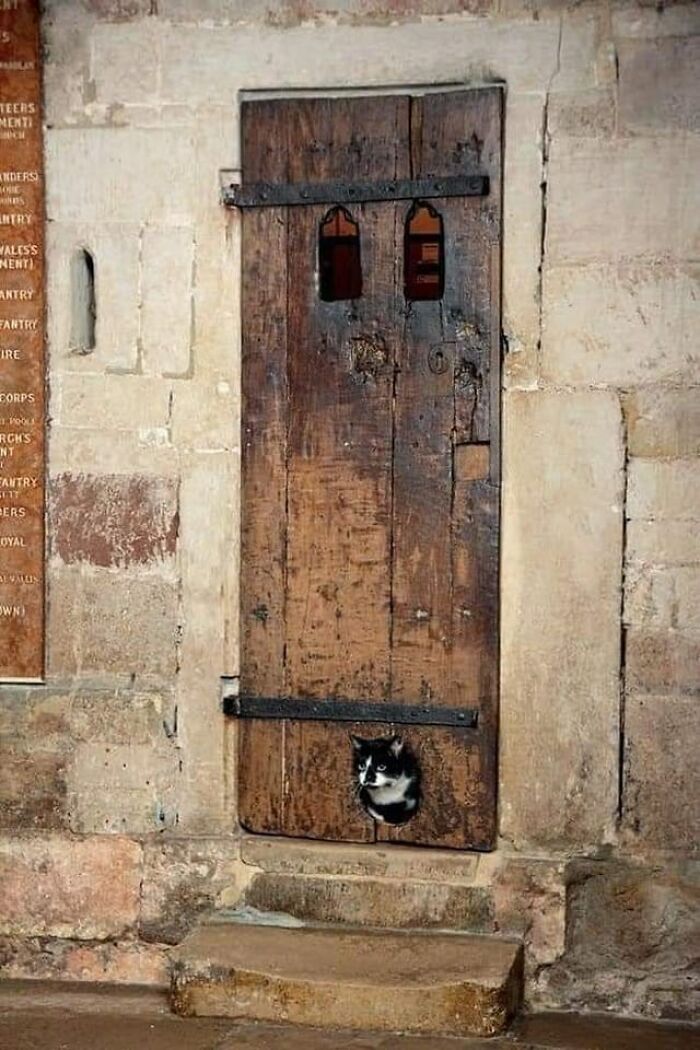
Image credits: Antique Archeology
#3 Treasure Of 51 Macedonian Gold Coins. Was Hidden Sometime After 330 Bce In A Cavity In A Rock In Ancient Corinth
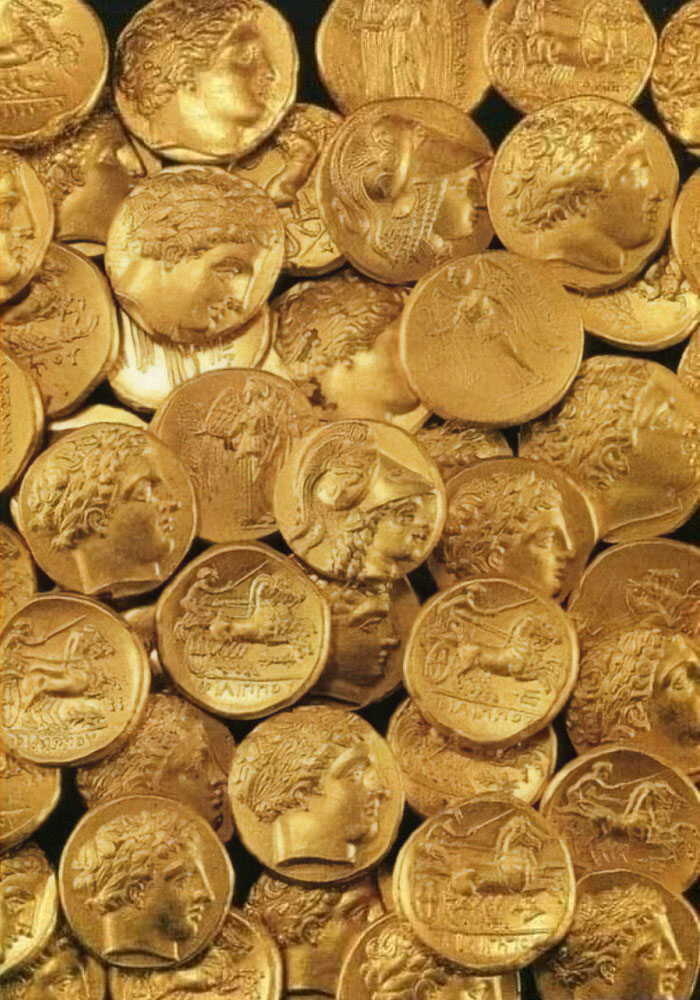
Image credits: Antique Archeology
#4 The Discovery Of The Ancient Statue Of Antinous Found In Delphi, Greece During An Excavation In 1894
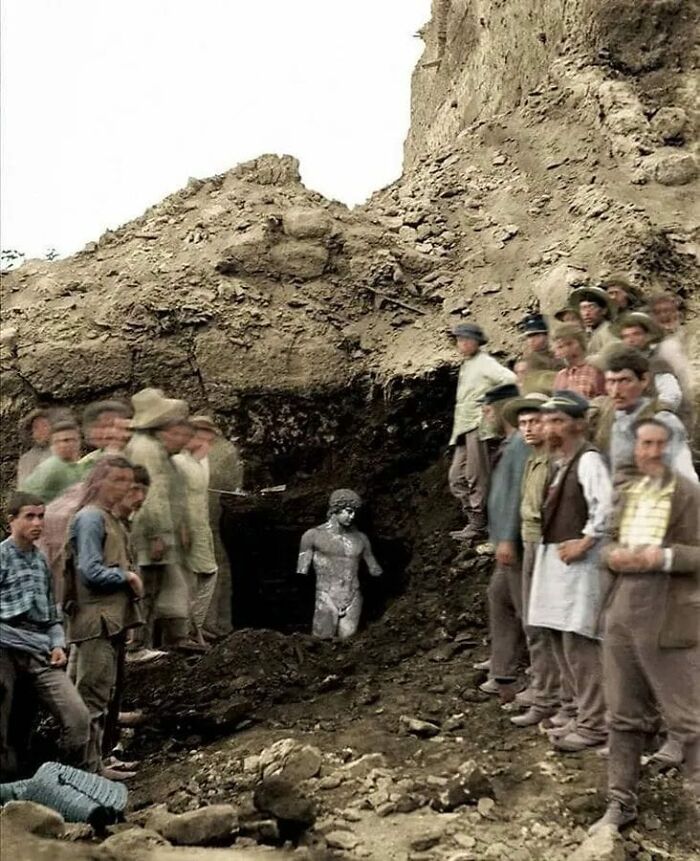
Image credits: Antique Archeology
#5 A Roman Toddler’s Footprint In A Red Clay Tile, Imprinted As It Was Drying ~2000 Years Ago. Vaison-La-Romaine (Ancient Vasio Vocontiorum)
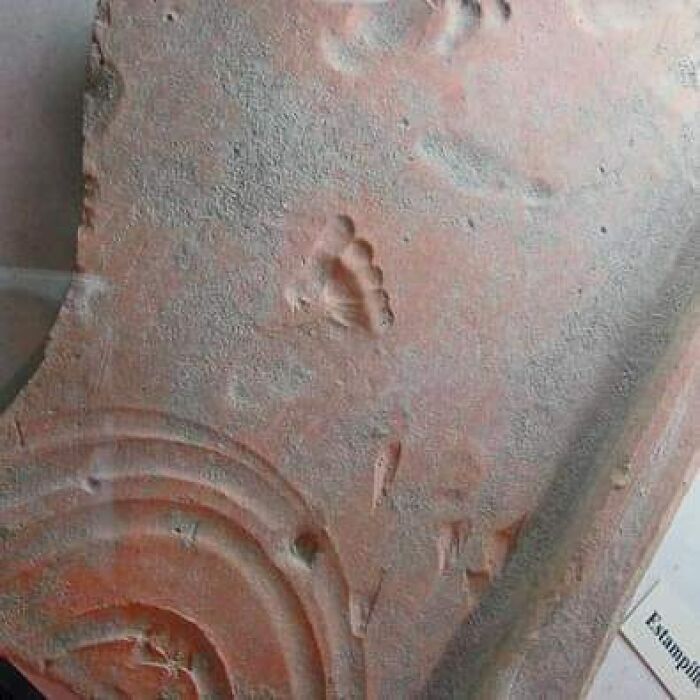
Image credits: Antique Archeology
#6 The World’s Earliest Known Ocular Prosthesis Dated To Between 2900 And 2800 Bc. From “The Burnt City” (Shahr-E Sokht), Iran
In December 2006, archaeologists discovered the world’s earliest known artificial eyeball. It was found by Mansour Sajjadi, leader of the Iranian team, which has been excavating an ancient necropolis at Shahr-i-Sokhta in the Sistan desert. It has a hemispherical form and a diameter of just over 2.5 cm (1 inch). It consists of very light material, probably bitumen paste. The surface of the artificial eye is covered with a thin layer of gold, engraved with a central circle (representing the iris) and gold lines patterned like sun rays. The female whose remains were found with the artificial eye was 1.82 m tall (6 feet), much taller than ordinary women of her time. On both sides of the eye are drilled tiny holes, through which a golden thread could hold the eyeball in place.
Since microscopic research has shown that the eye socket showed clear imprints of the golden thread, the eyeball must have been worn during her lifetime. The woman’s skeleton has been dated to between 2900 and 2800 BC.
Shahr-e Sukhteh, is an archaeological site of a sizable Bronze Age urban settlement, associated with the Jiroft culture. It is located in Sistan and Baluchistan Province, the southeastern part of Iran, on the bank of the Helmand River, near the Zahedan-Zabol road. It was placed on the UNESCO World Heritage List in June 2014.
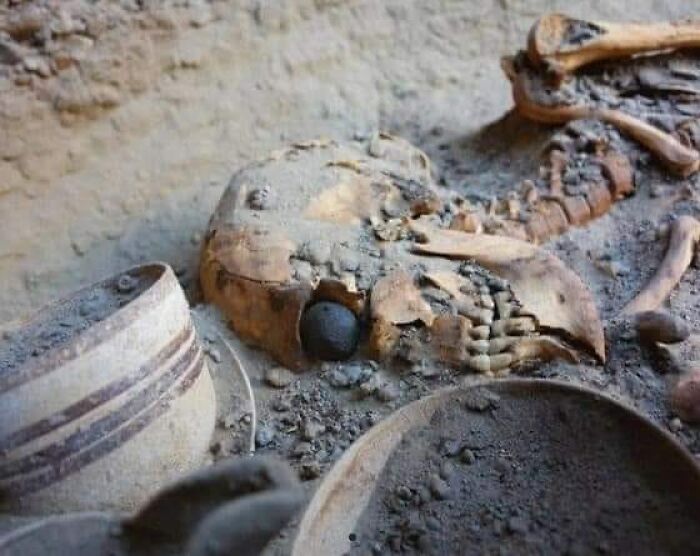
Image credits: Antique Archeology
#7 Over 100,000 Ceramic Wares From Two Chinese Shipwrecks, 1500 Meters Deep In The South China Sea. Discovered In May 2023. Ships Dated To The Ming Dynasty, 1506-1522 Ad
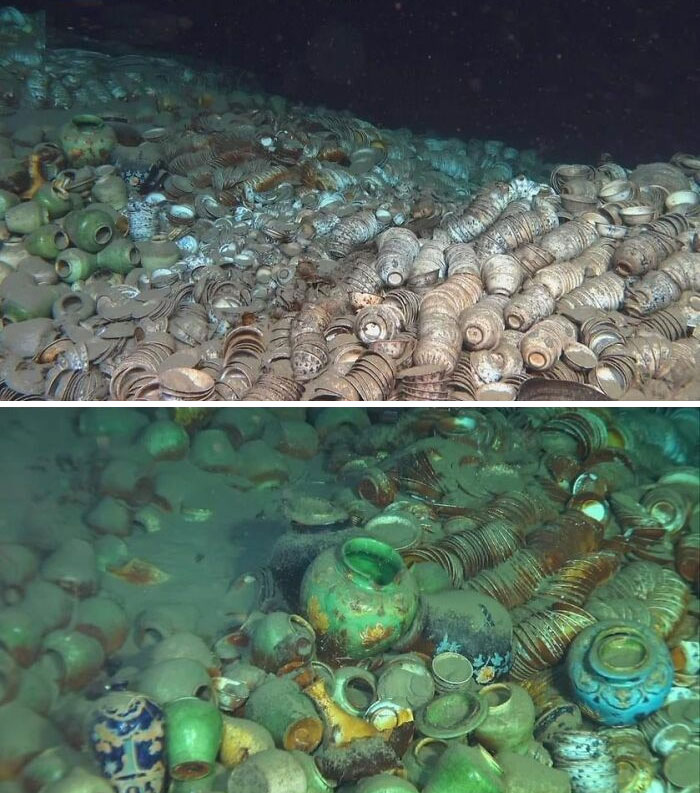
Image credits: Antique Archeology
#8 Beautiful Ancient Stone Masonry
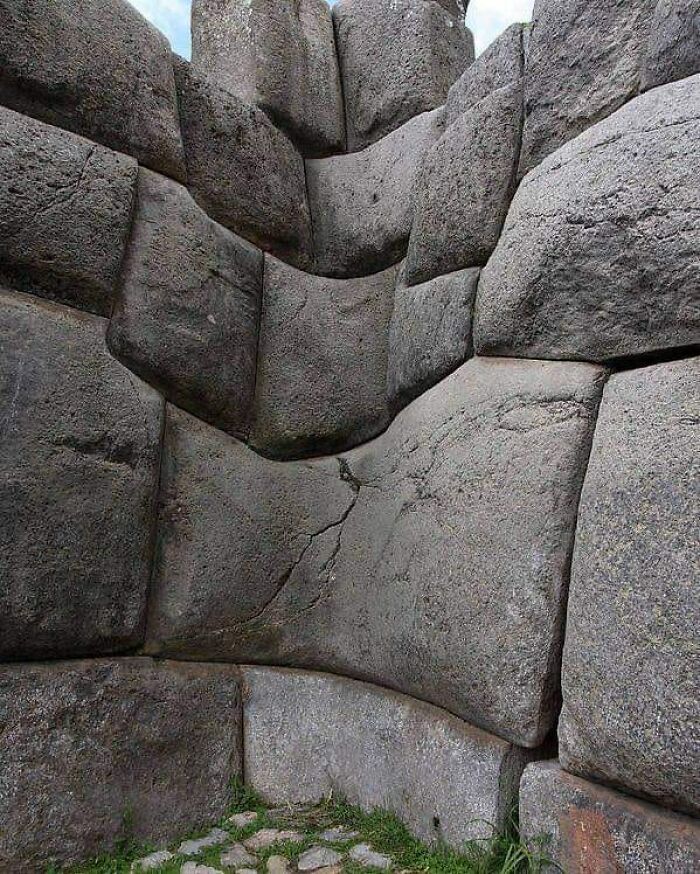
Image credits: Antique Archeology
#9 Mosaics Of A Roman Villa Found Under A Vineyard In Italy
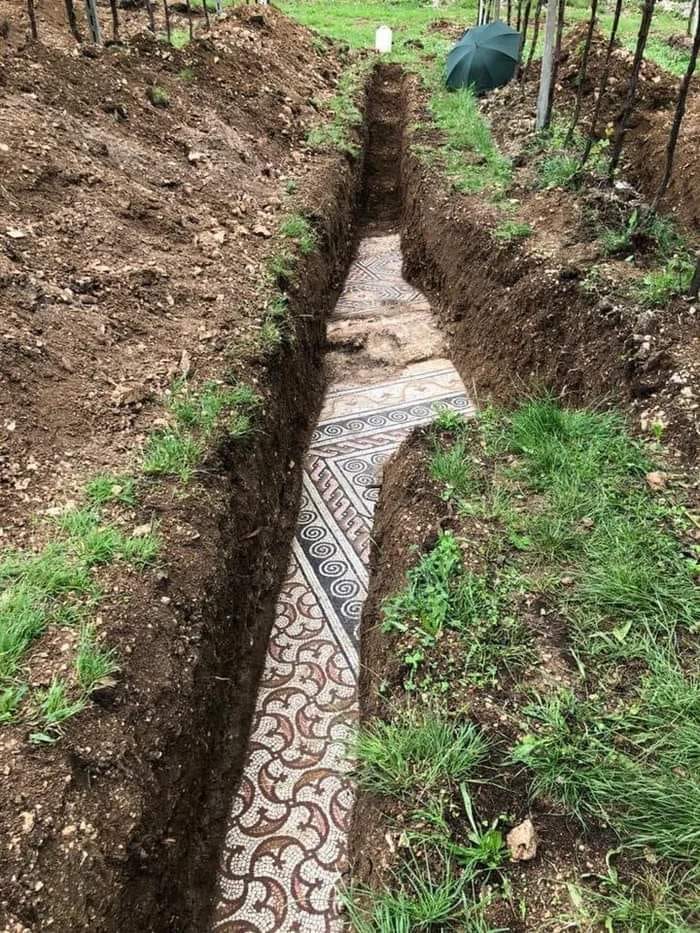
Image credits: Antique Archeology
#10 Roman Glass Jug With A Smaller Glass Jug Inside . A So Called Joke Jar That Shows The Skill Of The Glassmaker
Probably made in workshop in Cologne, found in burial in Stein am Rhein, #Switzerland, 4th c. AD.
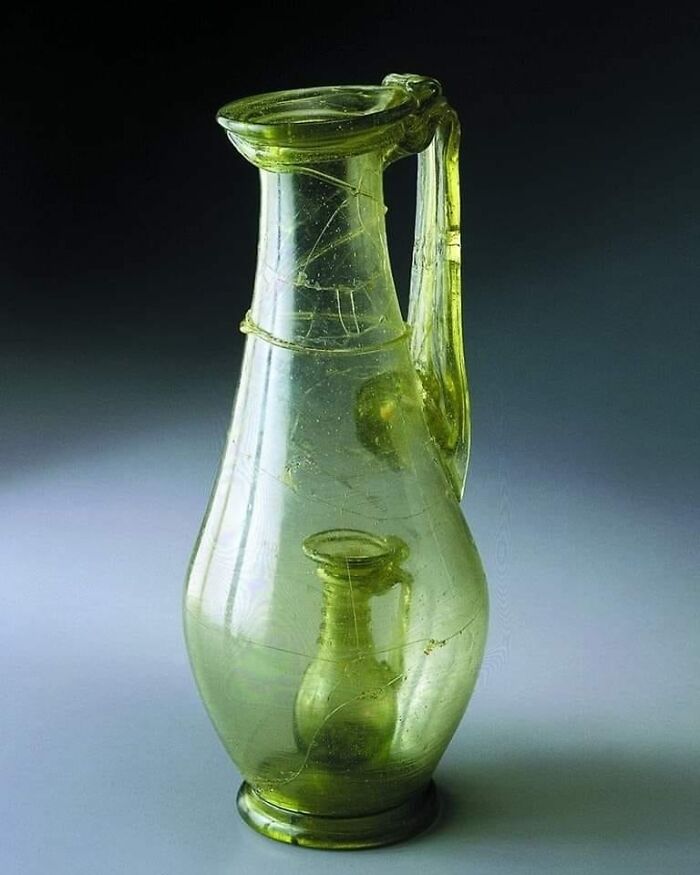
Image credits: Antique Archeology
#11 Mosaic Remains From Archaeological Site Of Volubilis, In Outskirts Of Meknes, Morocco
Archaeological site was founded in 3rd century BC, and was included in the UNESCO World Heritage List in 1997
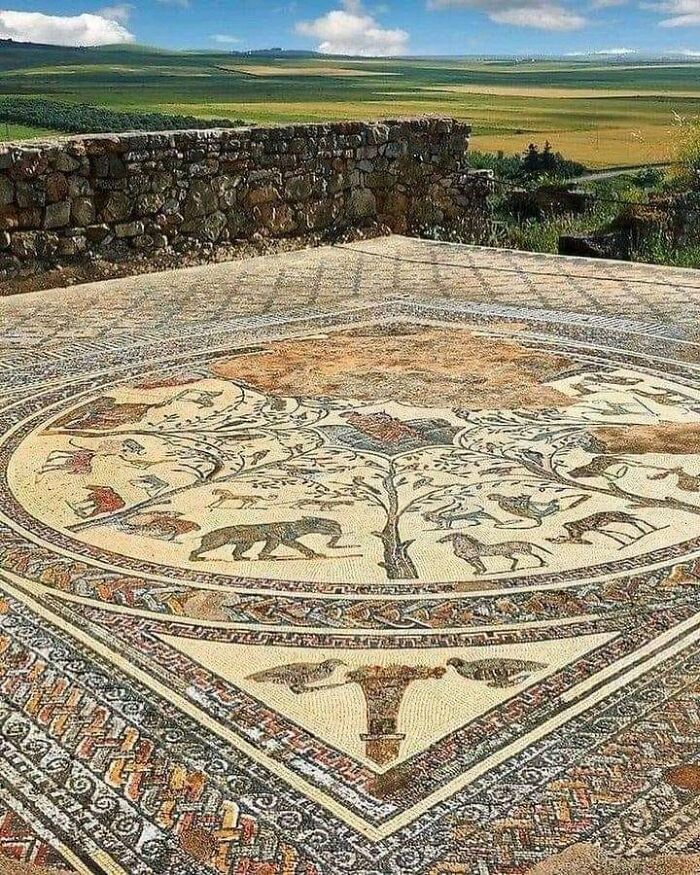
Image credits: Antique Archeology
#12 A Massive Floor Mosaic From The Bath Of The Seven Wise Men At Ostia Antica. Made Around 1,800 Years Ago, It Depicts An Elaborate Black And White Hunting Scene
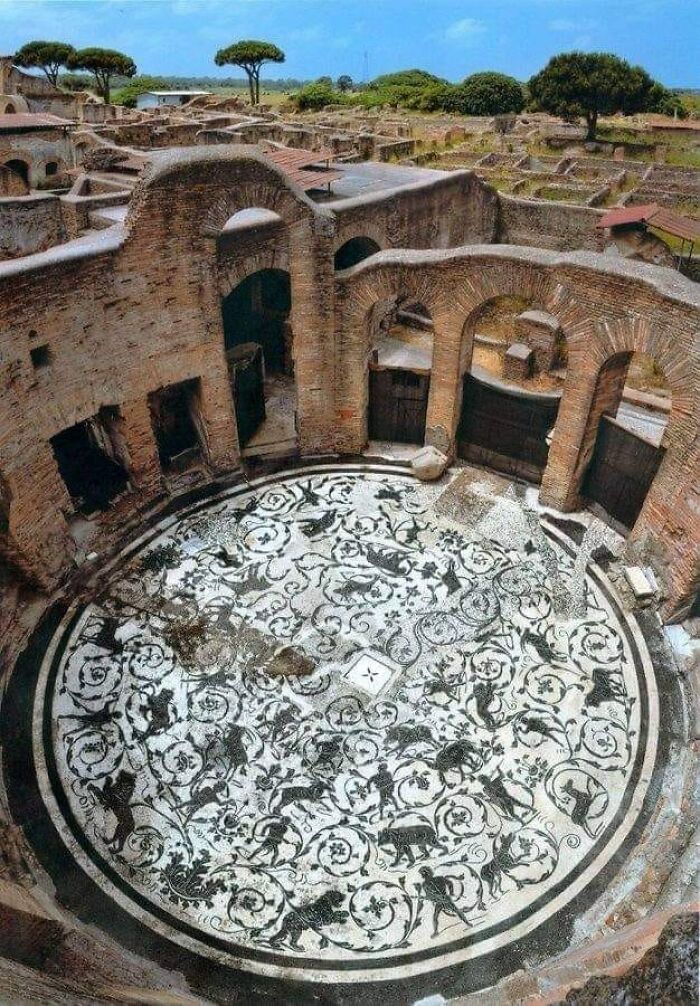
Image credits: Antique Archeology
#13 The Guinigi Tower – A 45-Metre-Tall Fortified Tower-House Built In The 1300s, With Holm Oak Trees Growing In Hanging Gardens At Its Top. Lucca, Italy
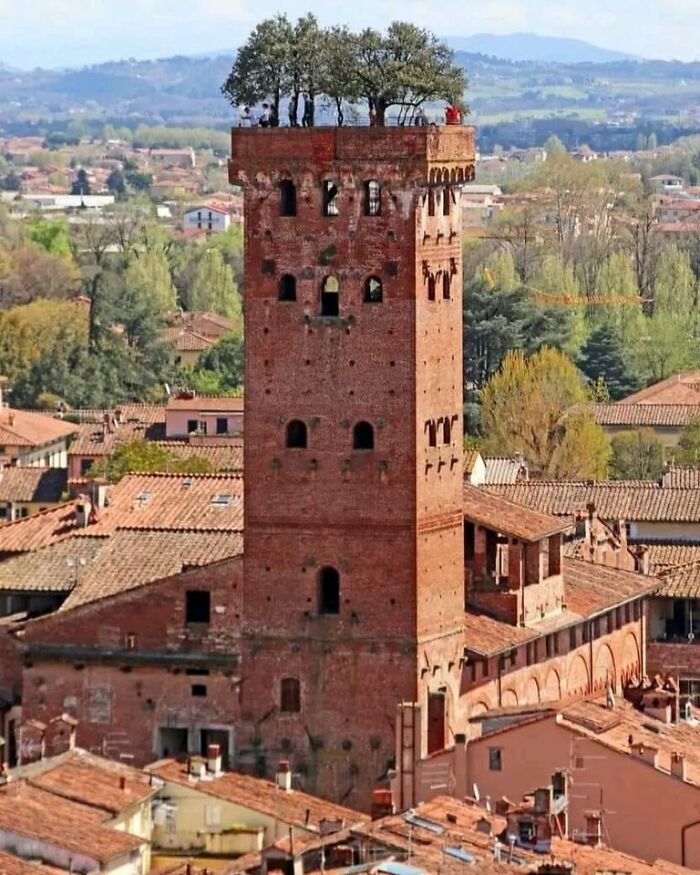
Image credits: Antique Archeology
#14 Persian Achaemenid Rhyton (Drinking Vessel Or Vessel For Pouring Libations) Made Of Lapis Lazuli And Gold. 6th-5th Century Bce. Abegg Foundation, Riggisberg, Switzerland (6.7.63)
Persian Achaemenid rhyton (drinking vessel or vessel for pouring libations) made of lapis lazuli and gold. 6th-5th century BCE. Abegg Foundation, Riggisberg, Switzerland (6.7.63)
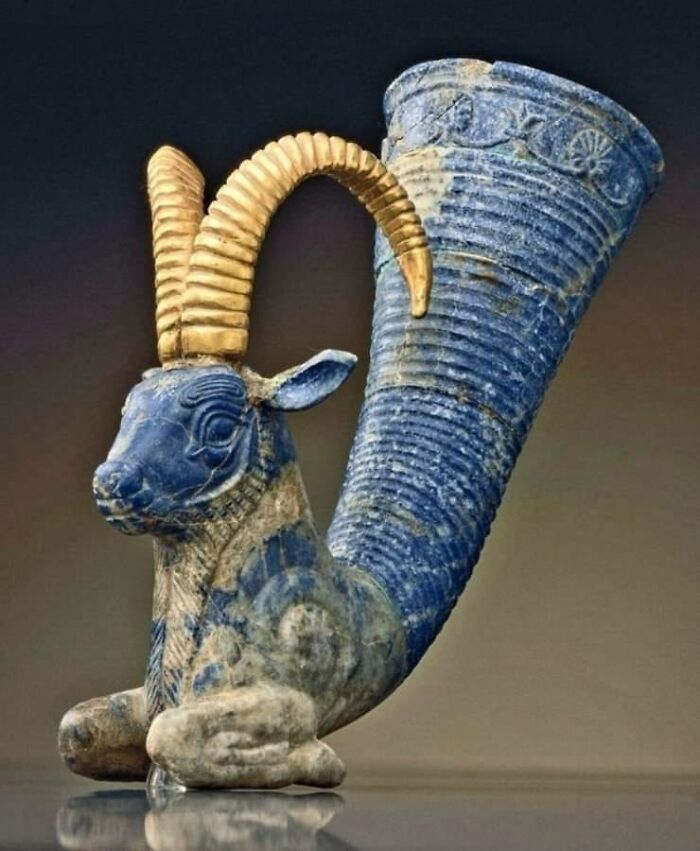
Image credits: Antique Archeology
#15 Pompeii – “The Mosaic Of The Great Hunt Of The Roman Villa Of Casale Di Piazza Armerina, Sicily.”
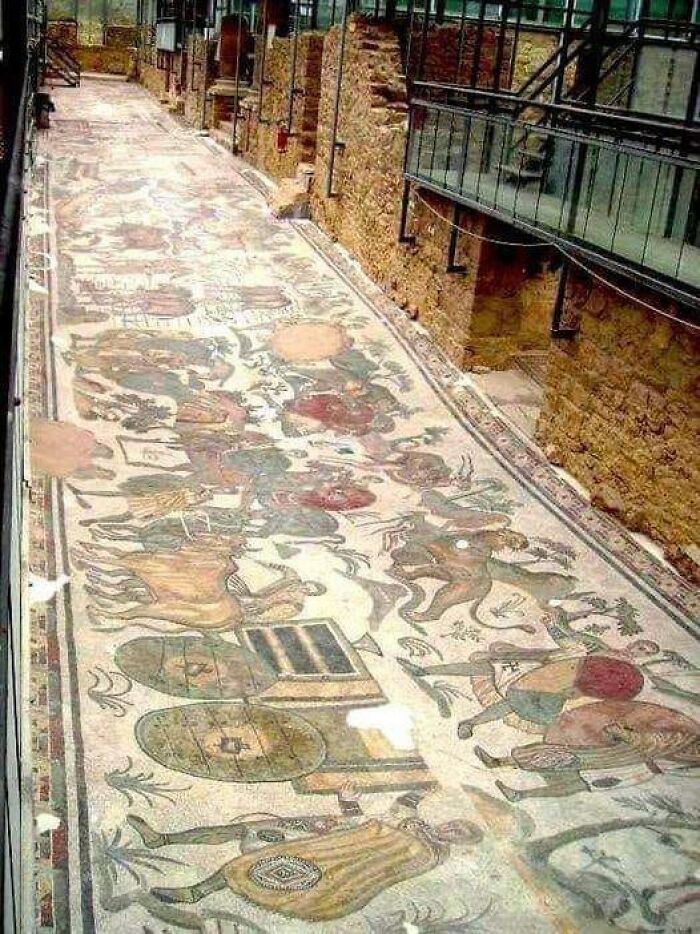
Image credits: Antique Archeology
#16 Ancient Tunnel Under The Great Pyramid Of Cholula
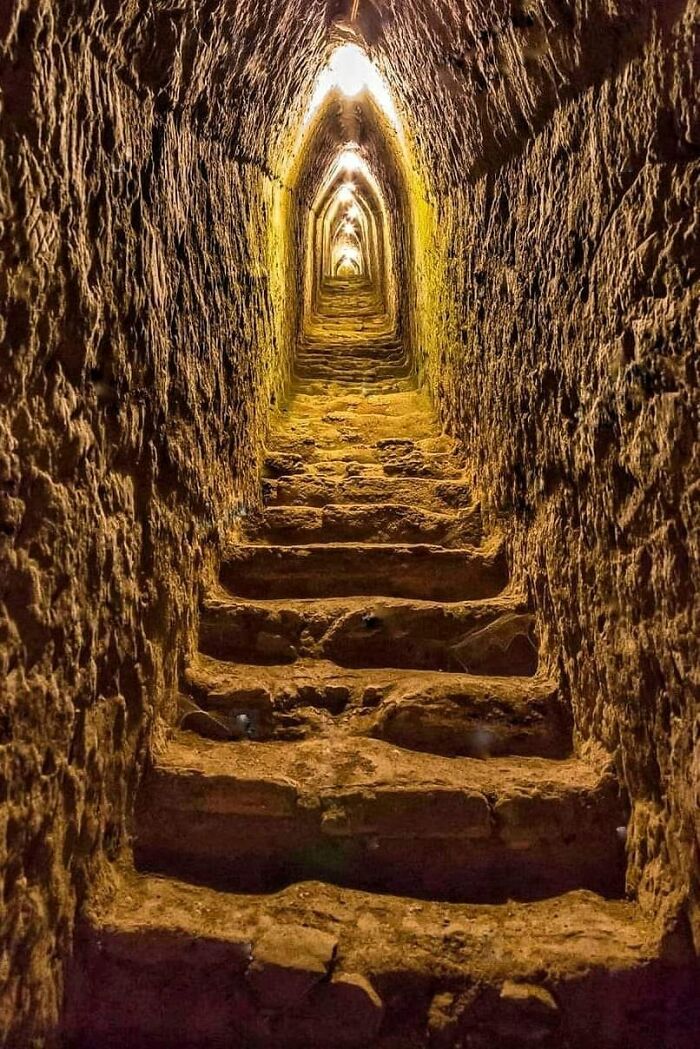
Image credits: Antique Archeology
#17 A Series Of 11th-Century Crystal Chess Pieces From The Museo Da Catedral In Ourense, Spain
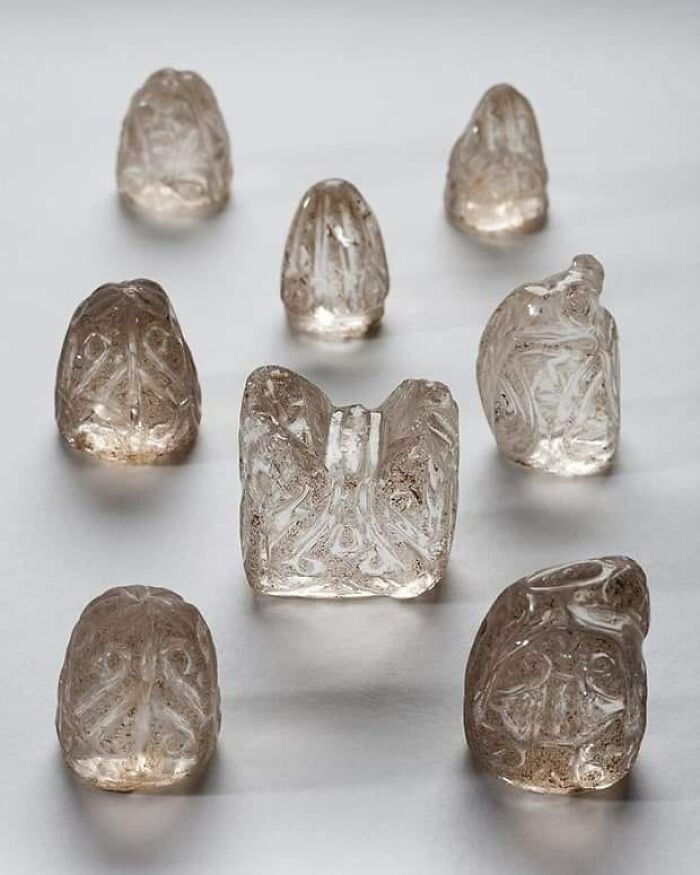
Image credits: Antique Archeology
#18 Mycenaean Daggers, Made Of Silver And Gold. Found In Shaft Graves 4-7 In Grave Circle A, 1550-1500 B.c
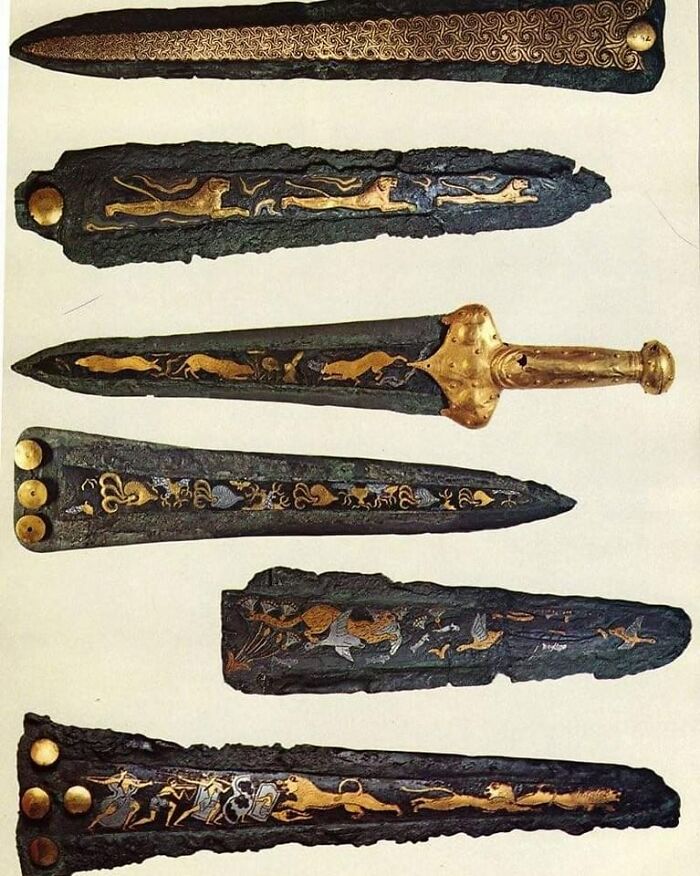
Image credits: Antique Archeology
#19 This 1500-Year-Old Cave In India Was Carved Out Of A Giant Rock
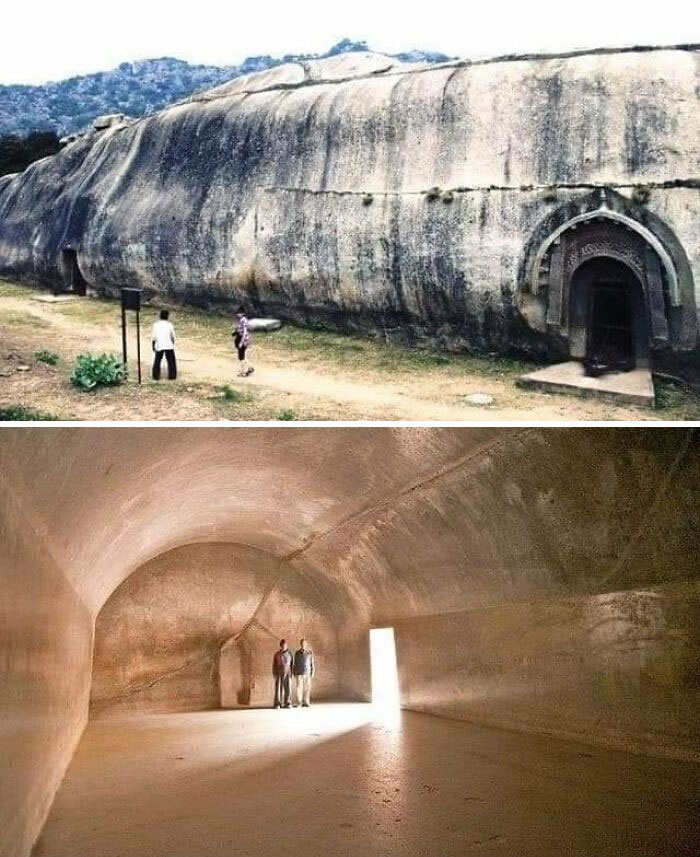
Image credits: Antique Archeology
#20 Stunning Gold Medallion With The Portrait Of Alexander The Great
This Medallion was discovered in Egypt as part of a hoard that comprised about twenty similar medallions (now dispersed among various museums), eighteen gold ingots, and six hundred gold coins issued by Roman emperors from Severus Alexander to Constantius I. One of the medallions, now in the Calouste Gulbenkian Museum in Lisbon, bears an inscription that possibly reads “Olympic games of the year 274”, a date corresponding to 242-243 CE. It is possible that the medallions were intended as prizes to be given out at that event. Alternatively, they may have been issued by Emperor Caracalla who is potrayed on some of them. Caracalla liked to be compared to the great king and conquerror Alexander of Macedon. Like Alexander, this Roman emperor waged war in the East, and actually died in the course of his campaign against the Parthians. This particular medallion shows Alexander the Great gazing heavenward and bearing a shield decorated with signs of the zodiac. This portrait shows him with his hair pulled back. He wears a decorated cuirass with a figure of Athena on the shoulder strap and, on the chest, a scene from the Gigantomachy (War of the Giants). The back depicts Alexander and Nike, goddess of victory, riding in a chariot, flanked by the deities Roma and Mars.
Image property: The Walter Art Museum, Baltimore Maryland.
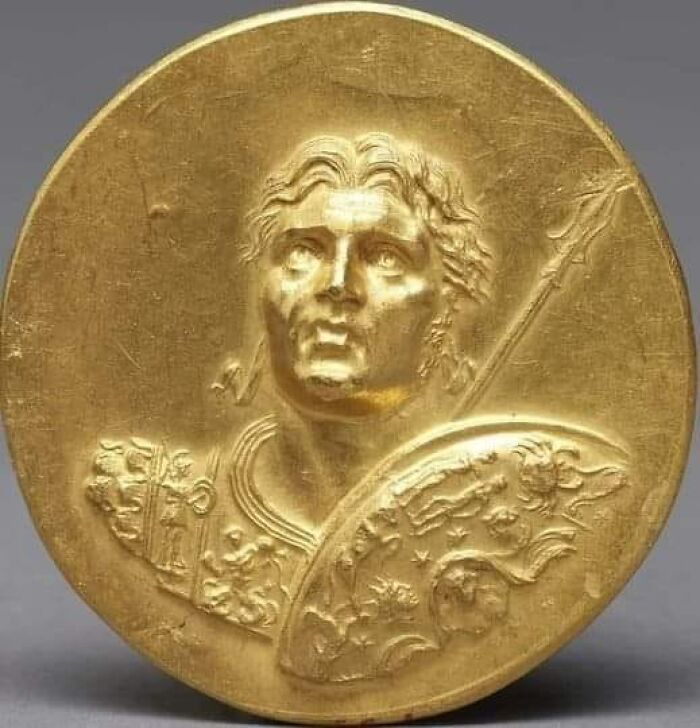
Image credits: Antique Archeology
#21 A Mosaic Floor Of A Villa Dating Back To The 4th Or 5th Century Ad Was Found In Montorio, Verona, Italy
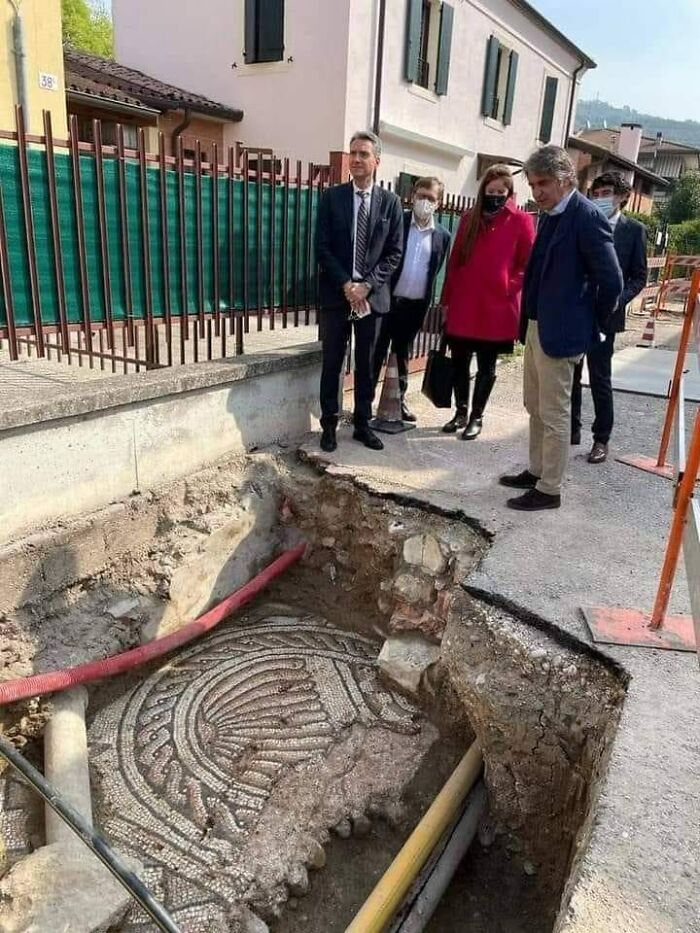
Image credits: Antique Archeology
#22 The ‘Melted’ Stairs And Fascinating Reliefs In Temple Of Hathor In Dendera, Egypt
Temple has been modified on same site starting as far back as Middle Kingdom (2030-1650 BC). Existing structure began construction in late Ptolemaic period at time of Ptolemy Auletes, 54 BC.
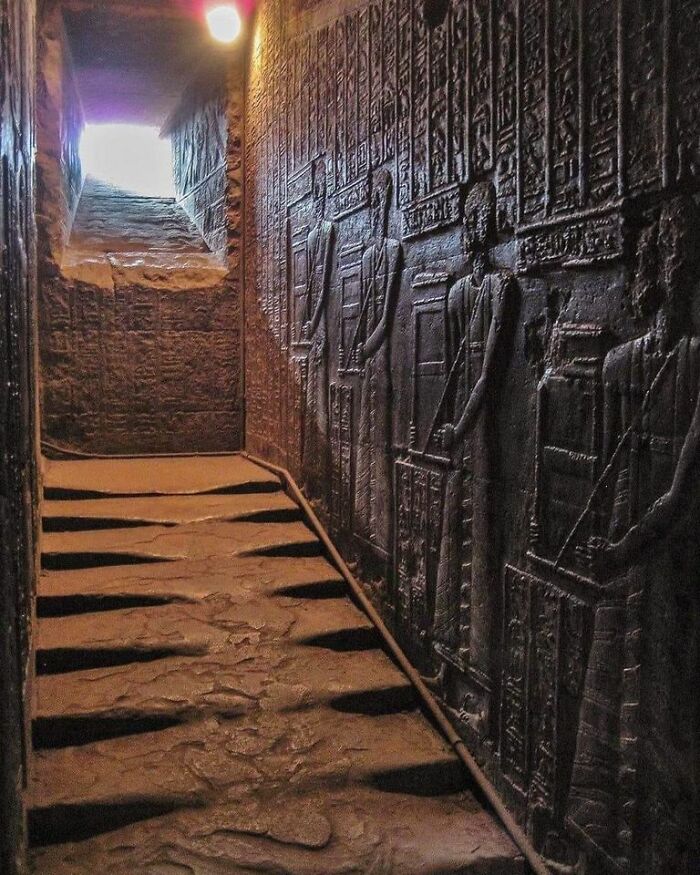
Image credits: Antique Archeology
#23 Tomb Of The Persian King Darius L (The Great) At Naqsh-E Rustam, In Iran
Reigning from c. 522 to c. 486 BC, he was one of the greatest Persian rulers. He ruled the Persian Empire when it was at its peak.
On the facade of the tomb there is an inscription that reads:
“A great god is Ahuramazda, who created this earth, who created yonder sky, who created man, who created happiness for man, who made Darius king, one king of many, one lord of many.
I am Darius the great king, king of kings, king of countries containing all kinds of men, king in this great earth far and wide, son of Hystaspes, an Achaemenid, a Persian, son of a Persian, an Aryan, having Aryan lineage.
King Darius says: By the favor of Ahuramazda these are the countries which I seized outside of Persia; I ruled over them; they bore tribute to me; they did what was said to them by me; they held my law firmly; Media, Elam, Parthia, Aria, Bactria, Sogdia, Chorasmia, Drangiana, Arachosia, Sattagydia, Gandara [Gadâra], India [Hiduš], the haoma-drinking Scythians, the Scythians with pointed caps, Babylonia, Assyria, Arabia, Egypt, Armenia, Cappadocia, Lydia, the Greeks (Yauna), the Scythians across the sea (Sakâ), Thrace, the petasos-wearing Greeks [Yaunâ], the Libyans, the Nubians, the men of Maka and the Carians.
King Darius says: Ahuramazda, when he saw this earth in commotion, thereafter bestowed it upon me, made me king; I am king. By the favor of Ahuramazda I put it down in its place; what I said to them, that they did, as was my desire.
If now you shall think that “How many are the countries which King Darius held?” look at the sculptures [of those] who bear the throne, then shall you know, then shall it become known to you: the spear of a Persian man has gone forth far; then shall it become known to you: a Persian man has delivered battle far indeed from Persia.
Darius the King says: This which has been done, all that by the will of Ahuramazda I did. Ahuramazda bore me aid, until I did the work. May Ahuramazda protect me from harm, and my royal house, and this land: this I pray of Ahuramazda, this may Ahuramazda give to me!
O man, that which is the command of Ahuramazda, let this not seem repugnant to you; do not leave the right path; do not rise in rebellion!” — DNa inscription of Darius I.
. . .
The tomb is one of four tombs at Naqsh-e Rustam. The others are believed to be that of Persian rulers Xerses l, Artaxerses and Darius ll. Unfortunately, the tombs were robbed in antiquity.
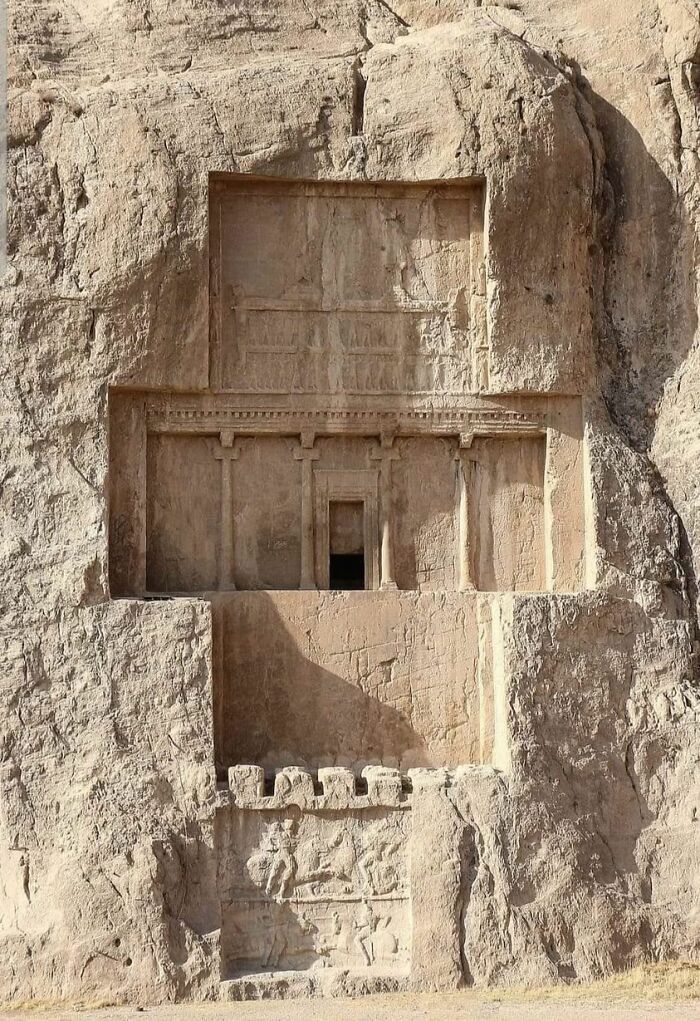
Image credits: Antique Archeology
#24
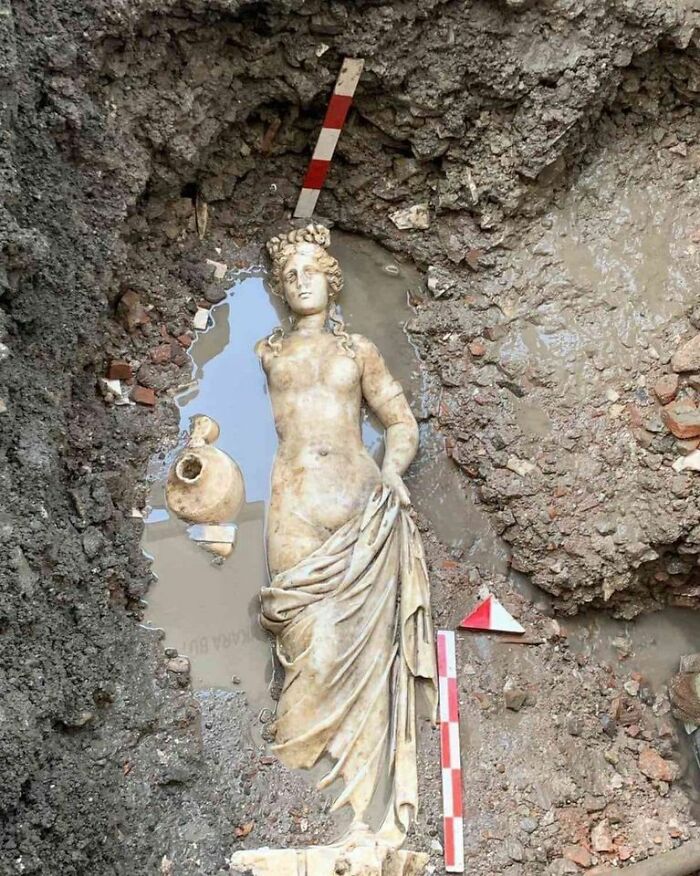
Image credits: Antique Archeology
#25 10,000 Year-Old Giraffe Engravings In The Sahara Desert
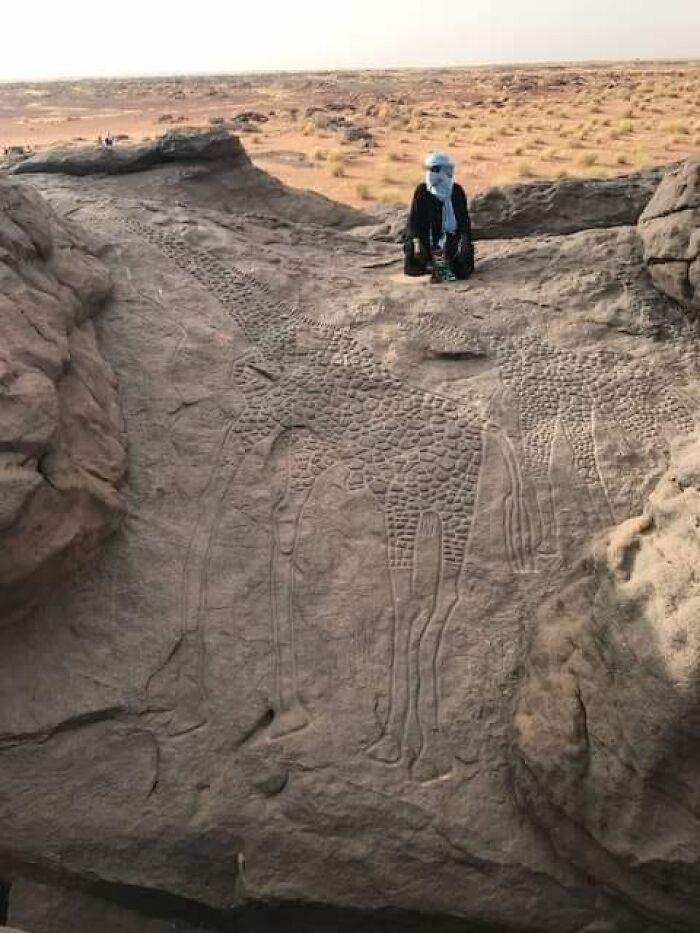
Image credits: Antique Archeology
#26 A 2,300-Year-Old Ancient Greek Gold Wreath Worth £100,000, Kept For Decades In A Tatty Box Of Old Newspapers Under Bed By Owner Who Had No Idea What It Was.
The wreath was put on sale at Duke’s of Dorchester auction house in 2016
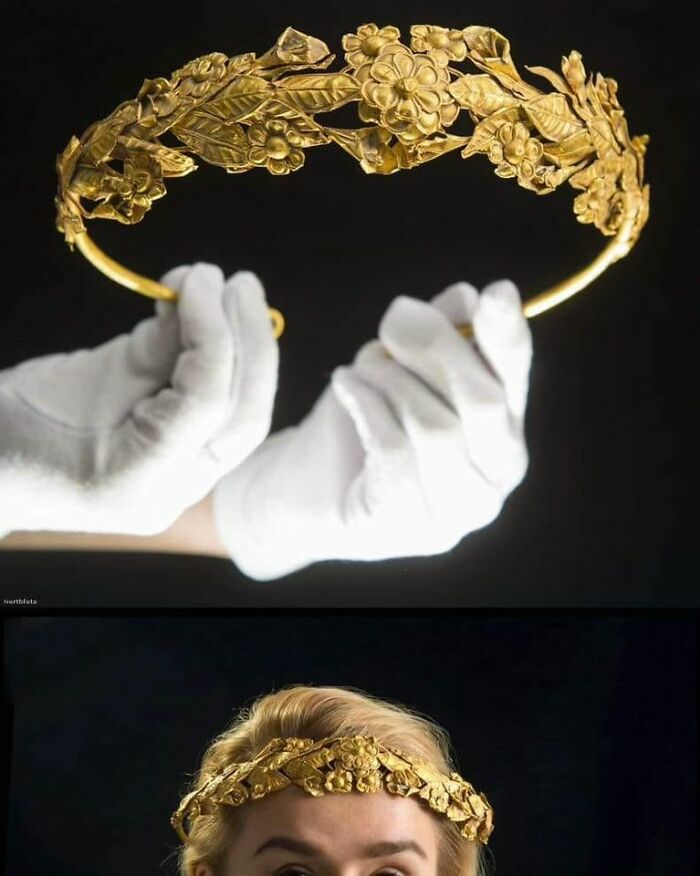
Image credits: Antique Archeology
#27 Myra Ancient City – Ruins And Rock Tombs
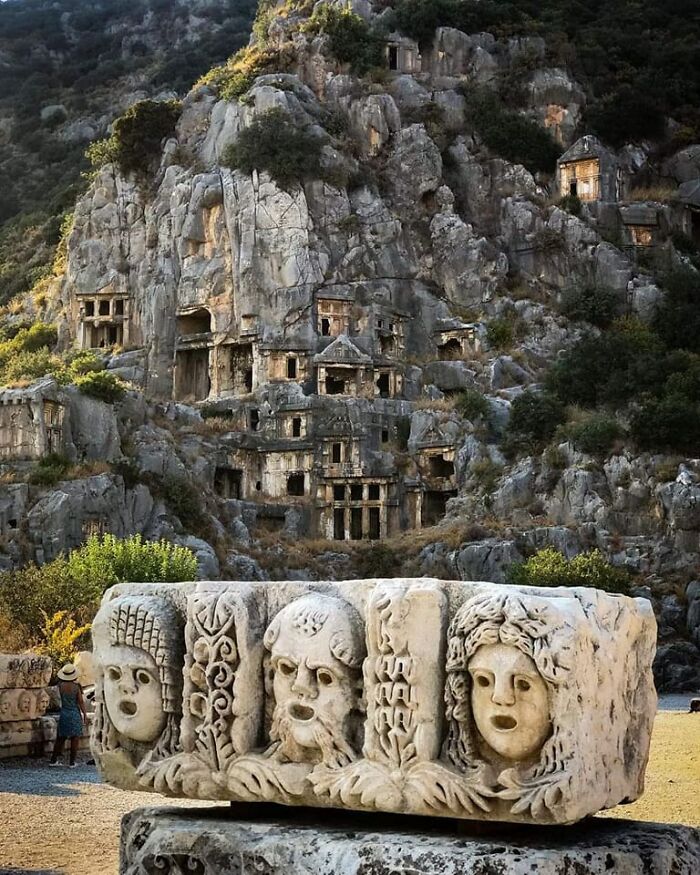
Image credits: Antique Archeology
#28 The Casque D’agris, A.k.a. Agris Helmet; A Ceremonial Celtic Helmet From Circa 350 Bc Found During 1981 In A Cave Near Agris, France
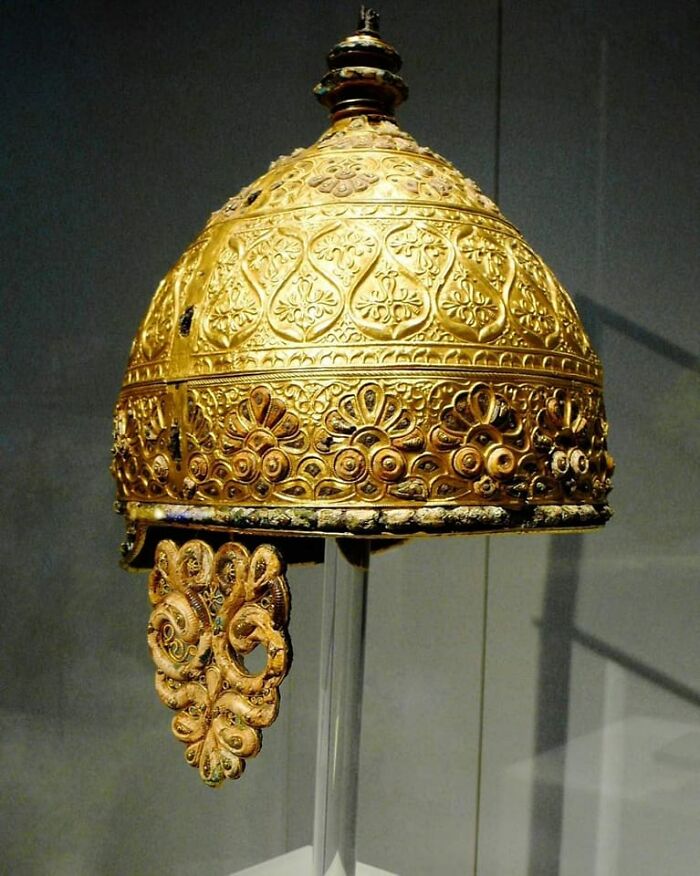
Image credits: Antique Archeology
#29 Roman Emperor Philippus The Arab Kneeling In Front Of Persian King Shapur I, Begging For Peace
The standing emperor represents Valerian who was taken captive by the Persian army in 260 AD, The triumph of Shapur I, Naqshe Rostam, Iran.
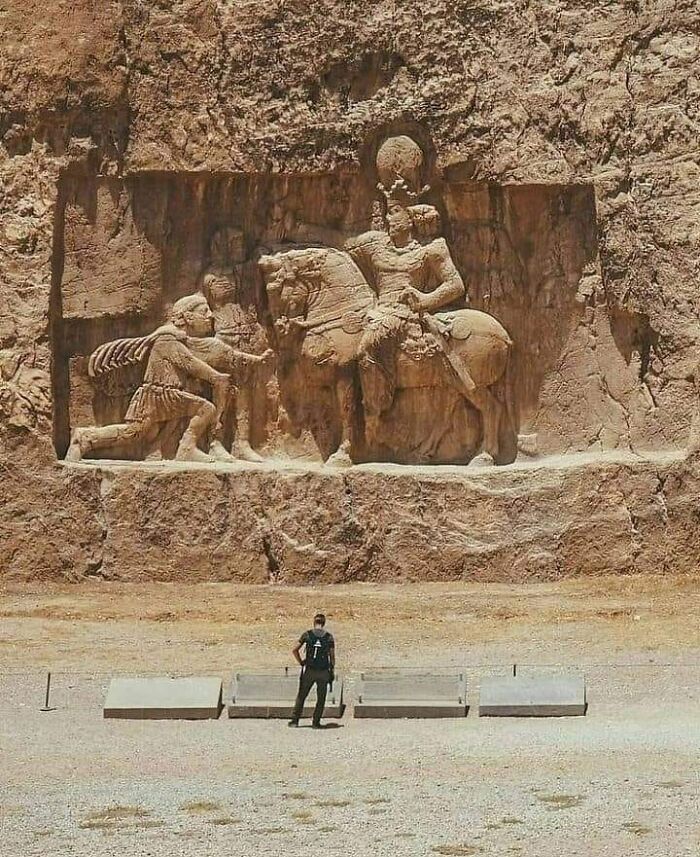
Image credits: Antique Archeology
#30 Armor Of An Officer Of The Imperial Palace Guard, China 18th Century
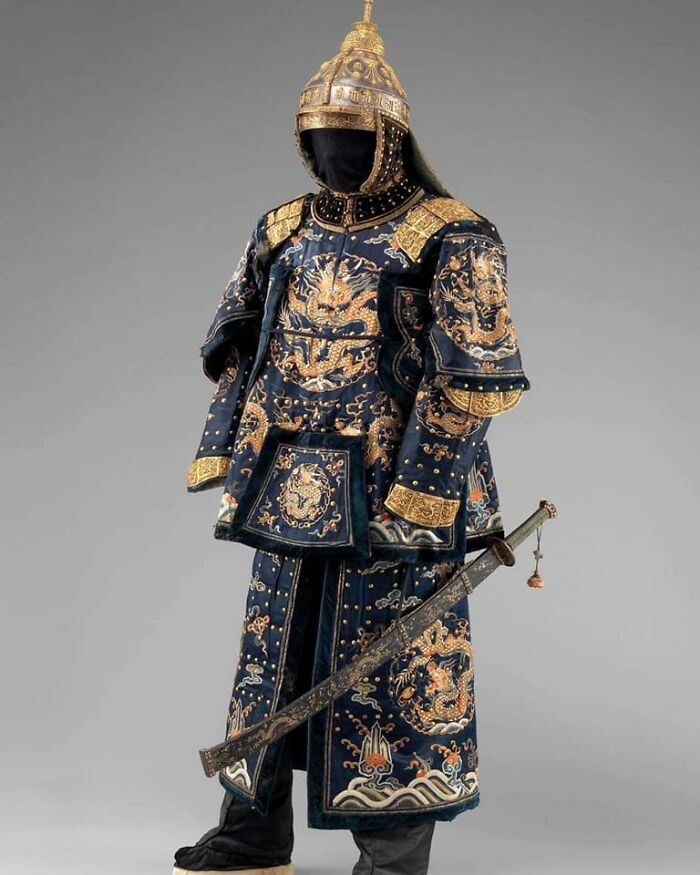
Image credits: Antique Archeology
#31 Mouse Eating A Nut. Roman Mosaic (200 Bc). Vatican Museums, Vatican City, Rome
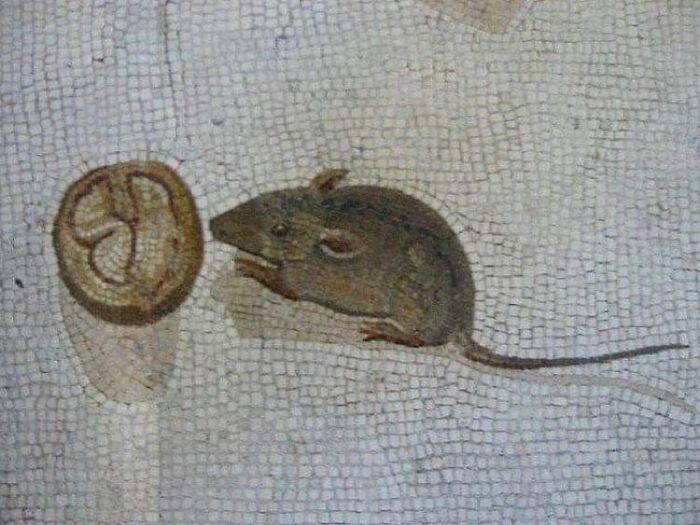
Image credits: Antique Archeology
#32 Divers Shining Lights On A Head Of Serapis, Found In The Sunken Egyptian Coastal Town Of Canopus. The Full Statue Was Once Over 4 Metres Tall And Dates To Circa 200 B.c
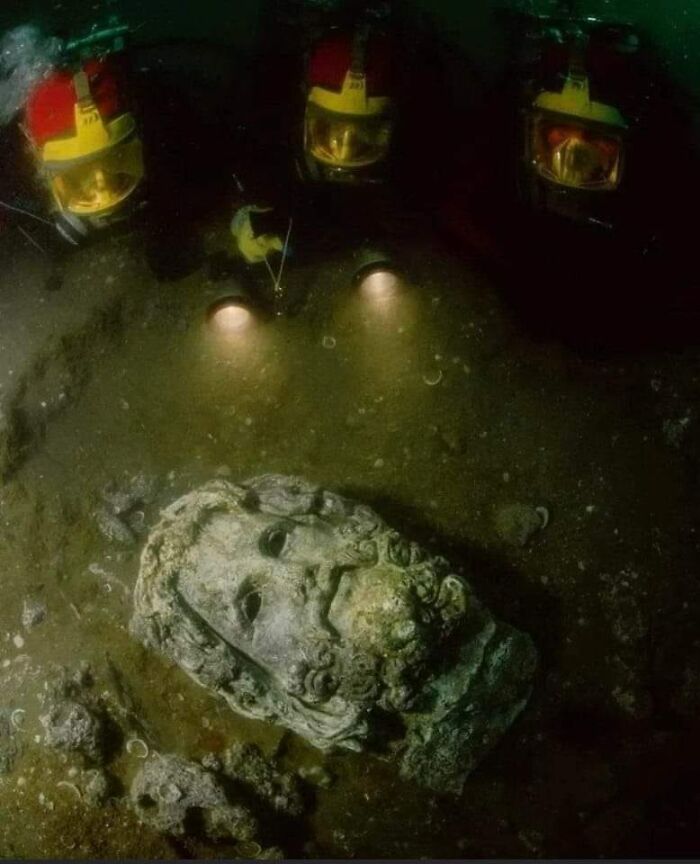
Image credits: Antique Archeology
#33 Huts Built From Mammoth Bones Found In Ukraine (Also At Locations In Czech Republic And Southern Poland)
May be the earliest structures built by humans, and thus the earliest examples of architecture.
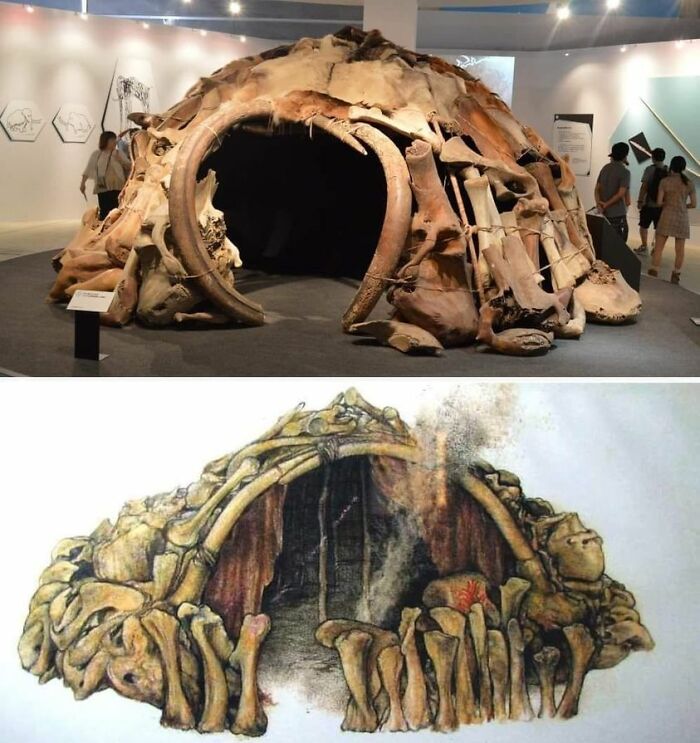
Image credits: Antique Archeology
#34 A 3rd Century Ce Roman Horse Armour, Made Up Of About 2000 Bronze Scales
Found in Dura-Europos, Syria, and is now housed at the National Museum of Damascus. The bottom picture shows the armour shortly after it was discovered in 1932
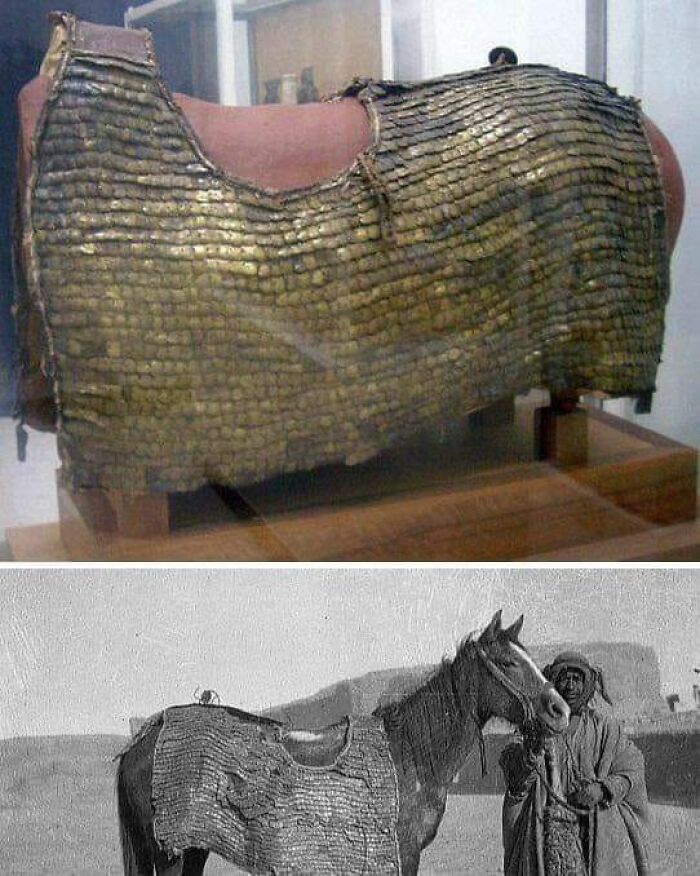
Image credits: Antique Archeology
#35 A 2000 Year Old Street From Pompeii
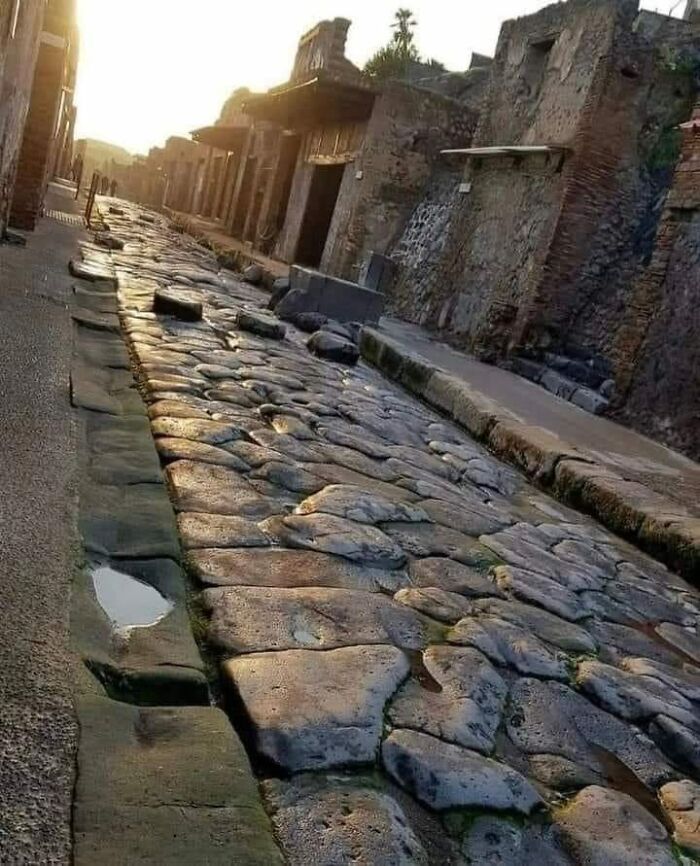
Image credits: Antique Archeology
#36 Tiled Stairs In Ali-Qapu Palace In Isfahan – Iran Built By The Safvaid King Shah Abbas I At The End Of The 16th Century (1597)
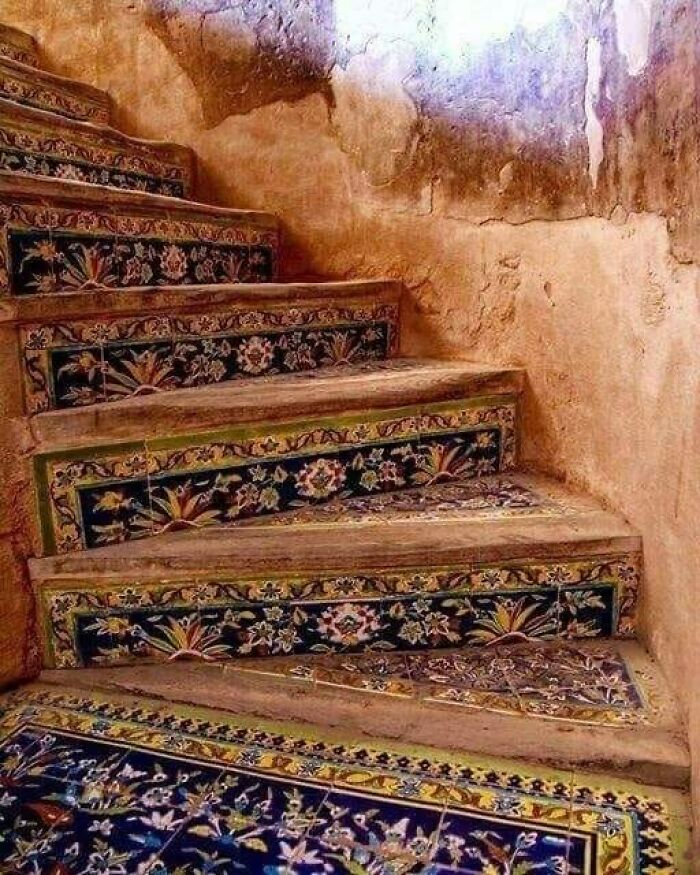
Image credits: Antique Archeology
#37 The Jewel-Encrusted Skeletons Of Roman Martyrs: Photographs From Rome’s Ancient Underground Catacombs
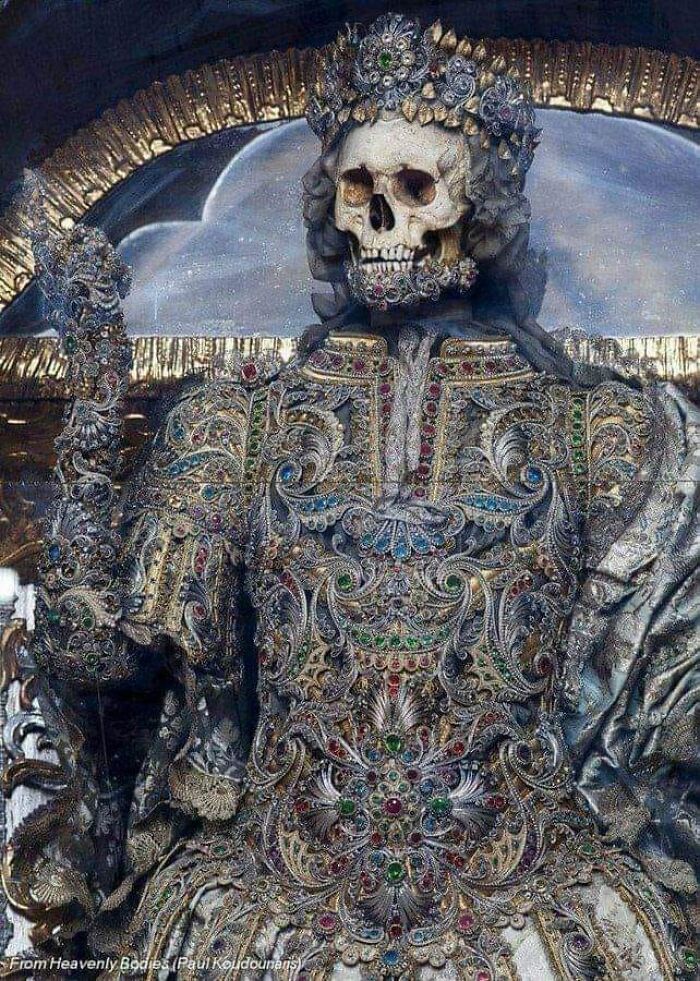
Image credits: Antique Archeology
#38 The Hyrcanian Golden Cup. Dated First Half Of First Millennium. Excavated At Kalardasht In Mazandaran, Iran. Collection: National Museum Of Iran
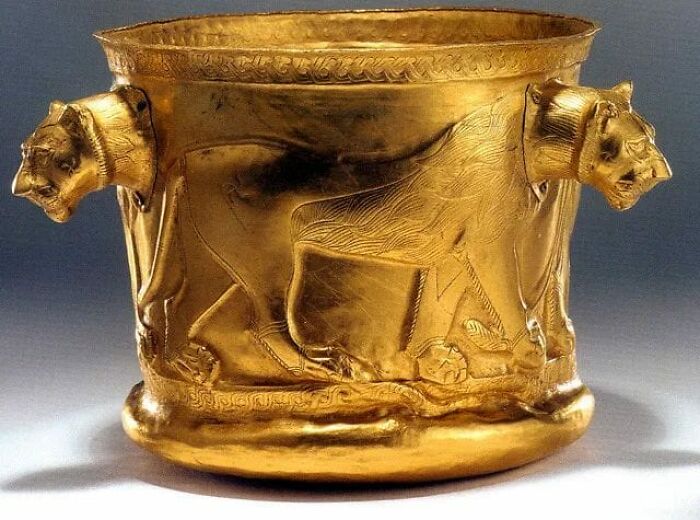
Image credits: Antique Archeology
#39 House Of Neptun And Amphitrite. Herculaneum, Italy
When Vesuvius erupted in AD 79, it buried not only the city of Pompeii, but a number of other nearby towns as well. One of them was Herculaneum. Among the many houses in Herculaneum is a relatively small, but richly decorated town house, called the House of the Neptune Mosaic, which must have belonged to a wealthy family
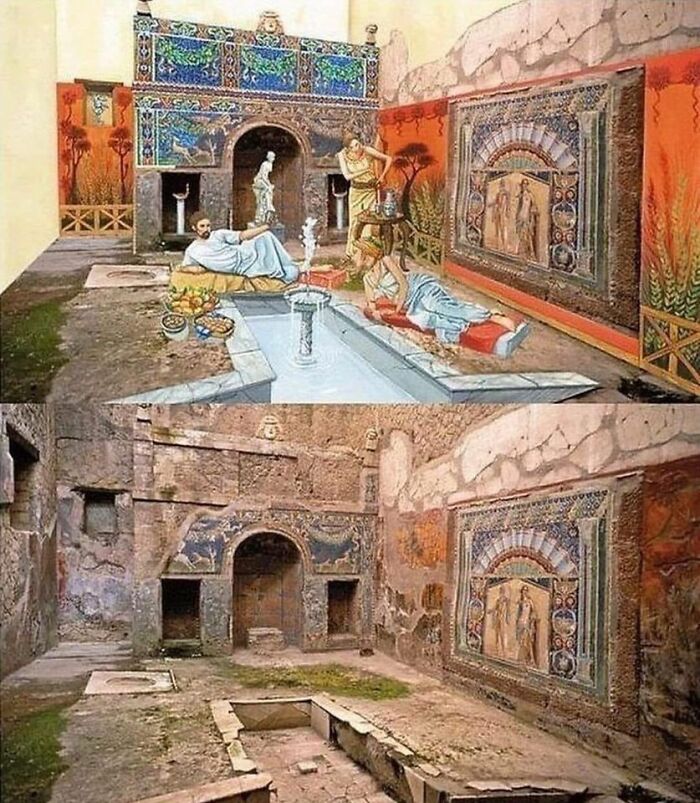
Image credits: Antique Archeology
#40 2,300-Year-Old Grand Theatre Of Ephesus, In Turkey, Before And After Excavation
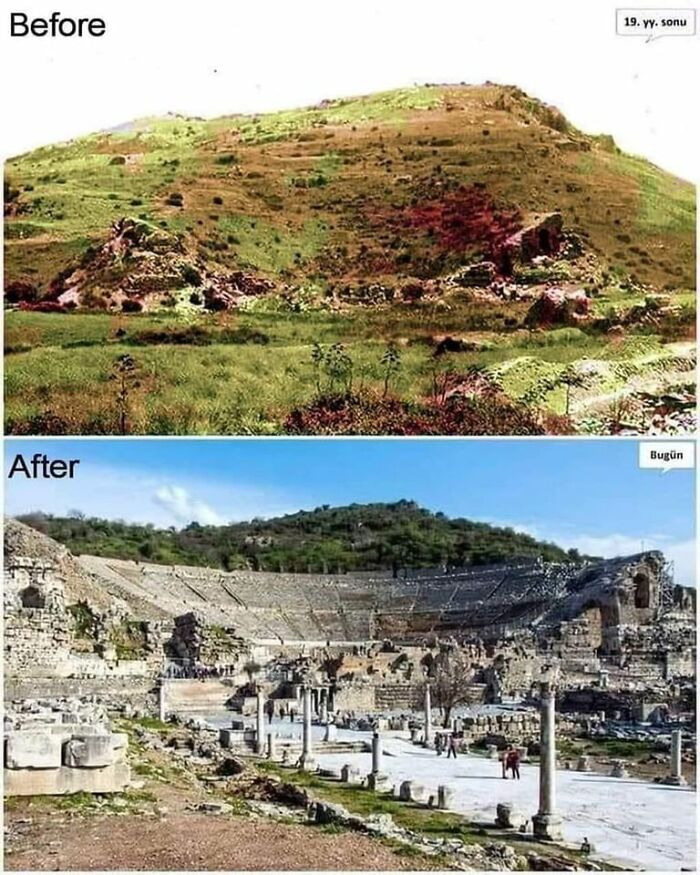
Image credits: Antique Archeology
#41 Treasure Recovered From The Wreck Of Theydah Gally
The only fully authenticated Golden Age pirate shipwreck ever discovered. The ship sank in 1717 killing nearly all of its 150-person crew, including its captain Bellamy.
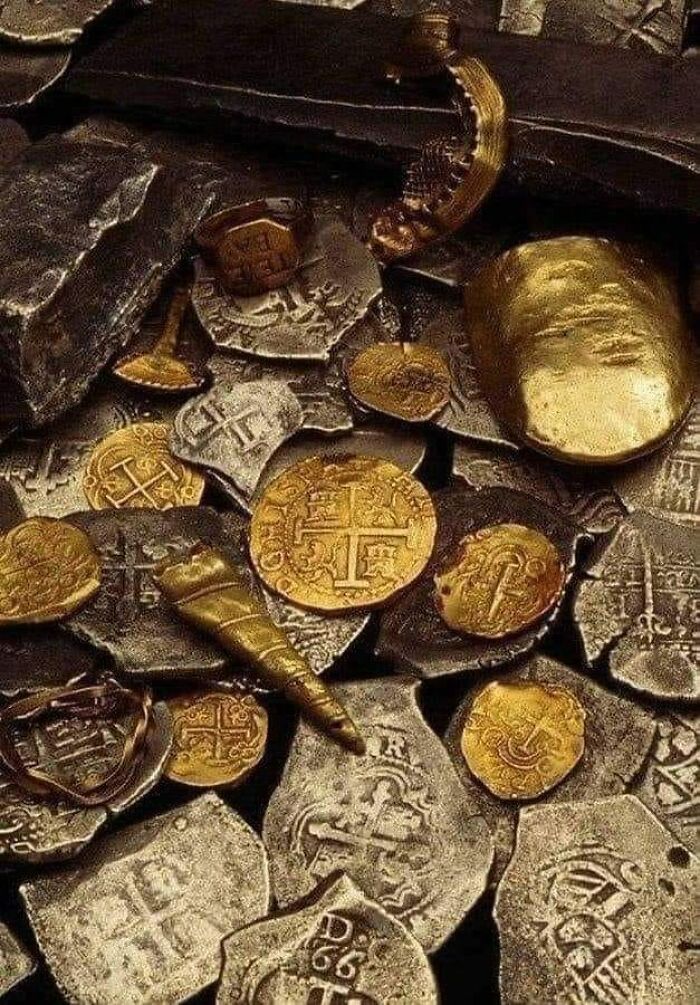
Image credits: Antique Archeology
#42 Roman Mosaic At Entrance To House Of Tragic Poet In Ruins Of Pompeii, Which Was Destroyed In 79 Ad.
Mosaic is approximately 2000 years old and depicts a chained dog with caption “cave canem,” which means “beware of the dog.”
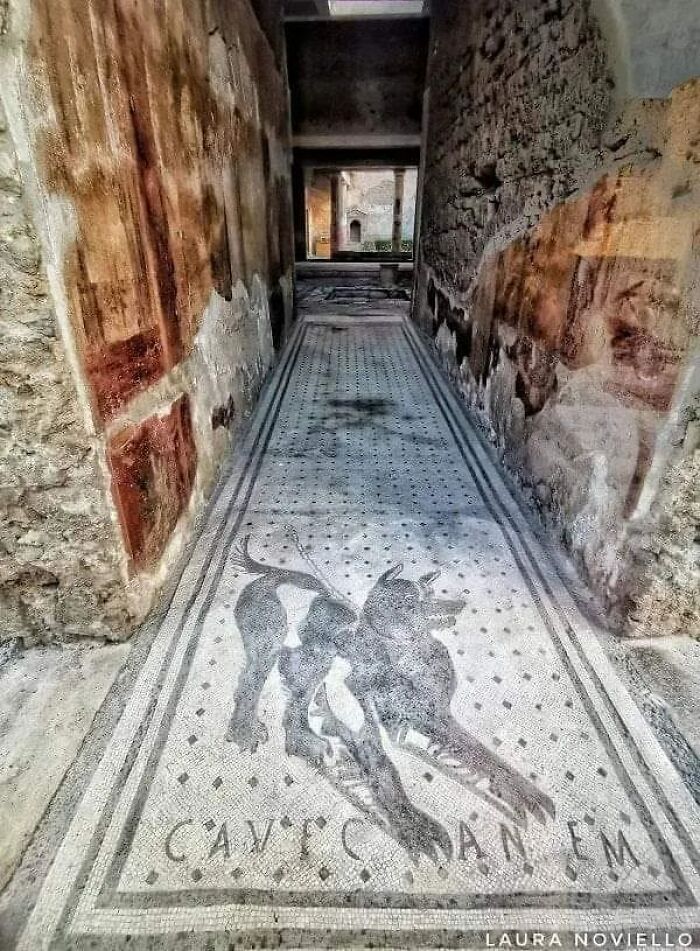
Image credits: Antique Archeology
#43 Mosaic In Sardinia, Italy
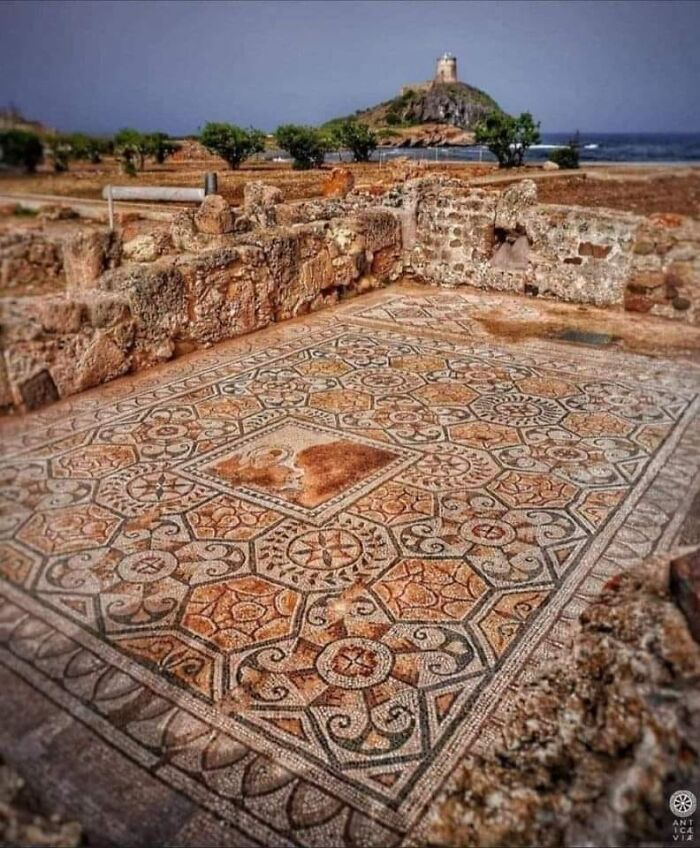
Image credits: Antique Archeology
#44 An Ostracon With Topless Dancer With Elaborate Hairstyle And Hoop Earrings In Gymnastic Backbend (Limestone), From Deir El-Medina; New Kingdom, 19th Dynasty, 1200 Bc. Egyptian Museum, Turin
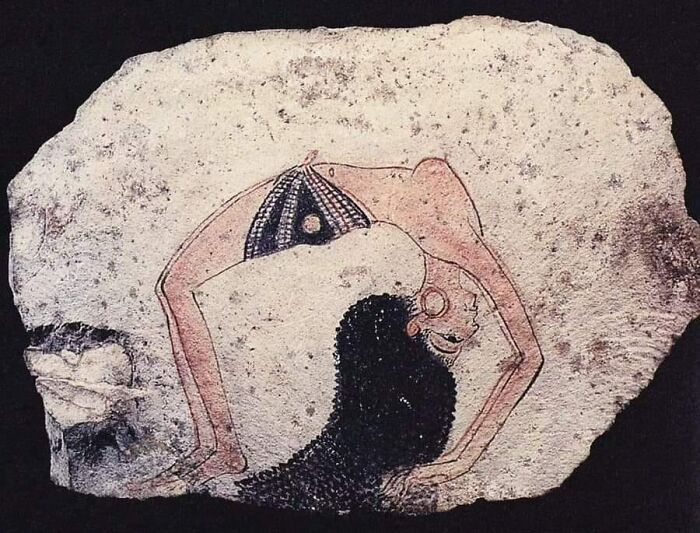
Image credits: Antique Archeology
#45 A Golden War Helmet Belonging To The Sumerian King Miscalamduk, Dating Back To 2600 Bc, Was Found In The Royal Tomb In The City Of Ur In Southern Iraq
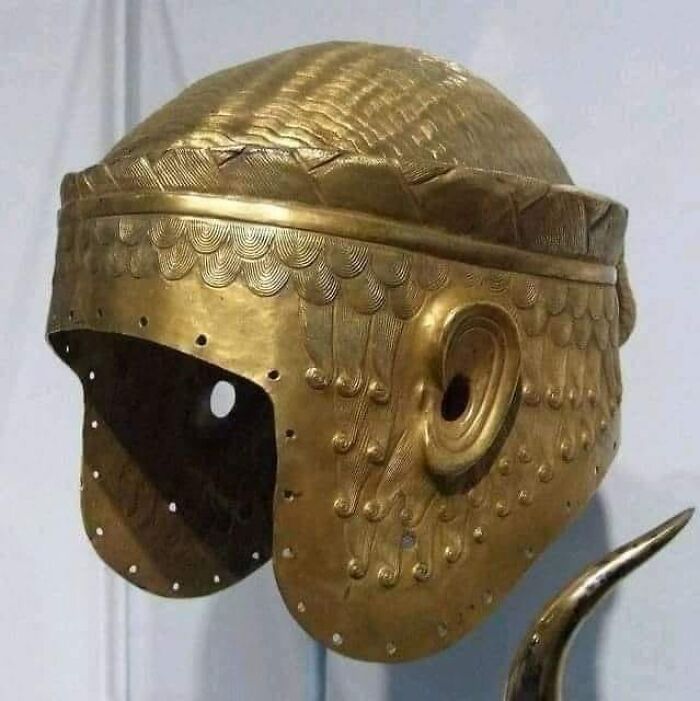
Image credits: Antique Archeology
#46 A Golden Ring Dating From The 4th Century Bce, Found In A Thracian King’s Tomb Near Zlatinitsa – Malomirovo In Yambol Region, Bulgaria
The discovery of the golden ring in the Thracian king’s tomb underscores the importance of jewelry in Thracian society, and it serves as a testament to the skill of Thracian artisans. It also provides valuable insights into the social hierarchy and status symbols of the ancient Thracians, as the ring was likely worn by a member of the ruling class.
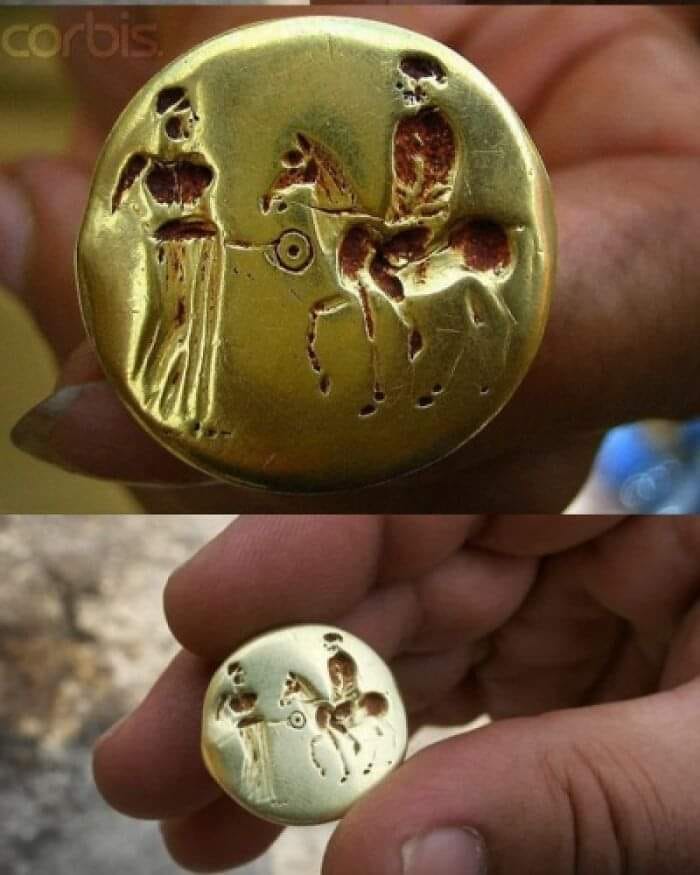
Image credits: Antique Archeology
#47 The ‘Trier Gold Hoard’ Was The Largest Roman Gold Hoard Ever Discovered
Comprising of 2,500 gold coins weighing 18.5 kg , the discovery was made during excavation works in 1993, nearly 1,800 years after it was hidden.
The discovery of the Gold Hoard in Trier in 1993 caused quite a sensation. Greater inspection revealed that it was not simply someone’s personal fortune but most likely an official treasury. The treasury had been carefully administered and had grown over time. The Hoard equated to the annual salary of around 130 Roman soldiers. The aurei (gold coins) feature a total of 27 emperors, empresses and members of the imperial family, and some are still considered unique to this day.
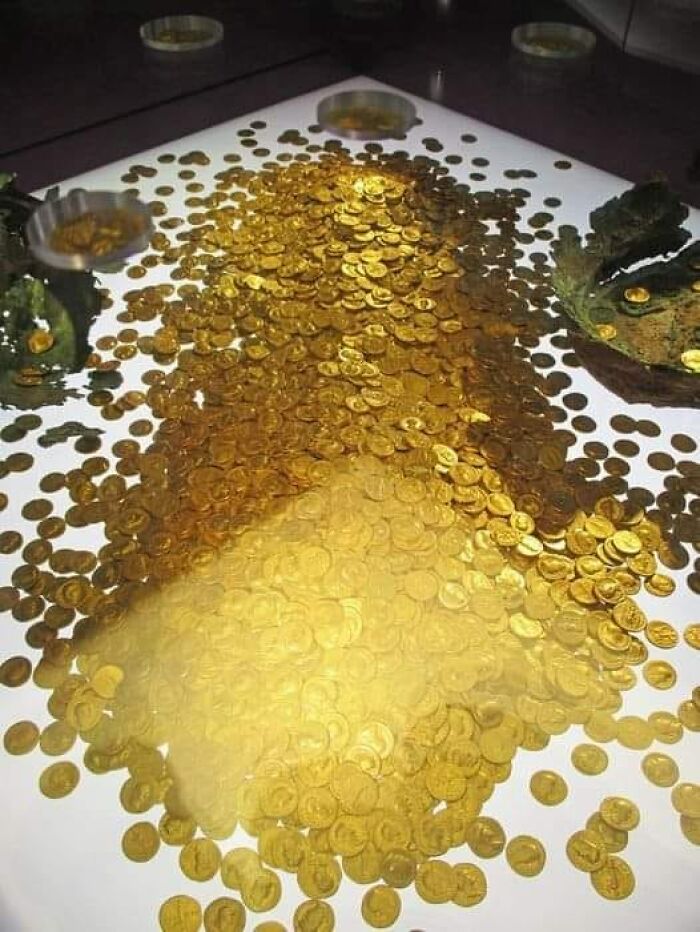
Image credits: Antique Archeology
#48 The Trier Gold Hoard Is A Hoard Of 2516 Gold Coins With A Weight Of 18.5 Kg, Found In Trier, Germany, In September 1993 During Construction Works, Nearly 1800 Years After It Was Hidden
It is described as the largest preserved Roman gold hoard worldwide.
Greater inspection revealed that it was not simply someone’s personal fortune but most likely an official treasury. The treasury had been carefully administered and had grown over time. The Hoard equated to the annual salary of around 130 Roman soldiers.
The aurei (gold coins) feature a total of 27 emperors, empresses and members of the imperial family, and some are still considered unique to this day. The gold coins were buried in a cellar during a civil war in 196 AD.
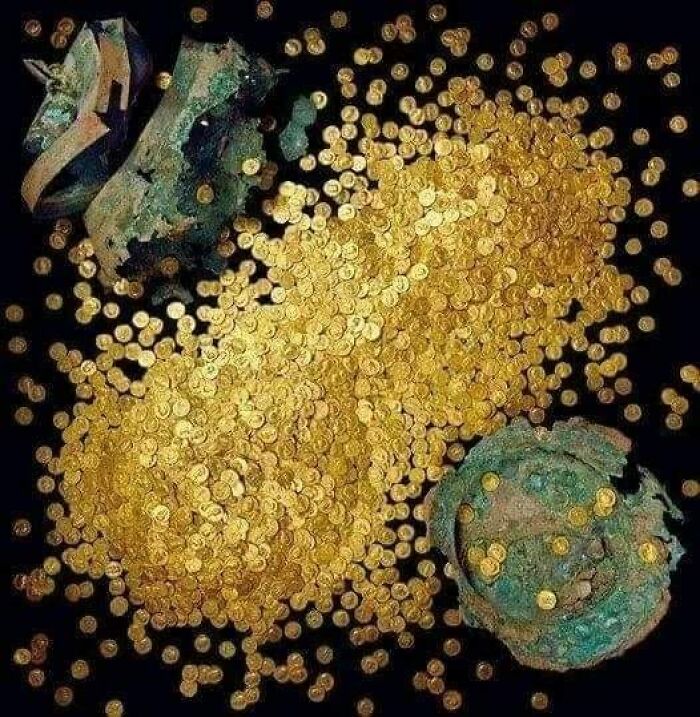
Image credits: Antique Archeology
#49 Sea Shell With Carved Head At The Apex (Probably Phoenician, 600 Bc)
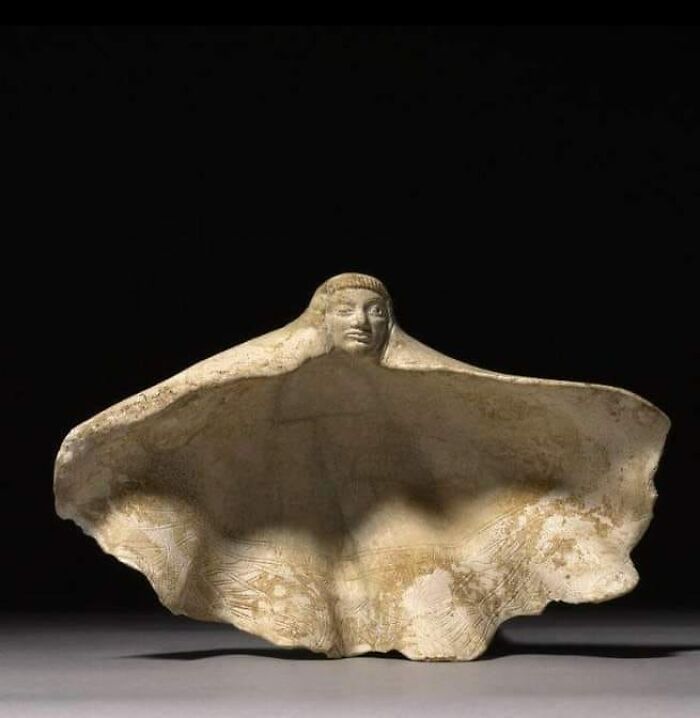
Image credits: Antique Archeology
#50 Details Of One Of The T Columns In Göbekli Tepe. It Is Approximately 12,000 Years Old, Making It Remarkably Older Than Egyptian Pyramids And Stonehenge
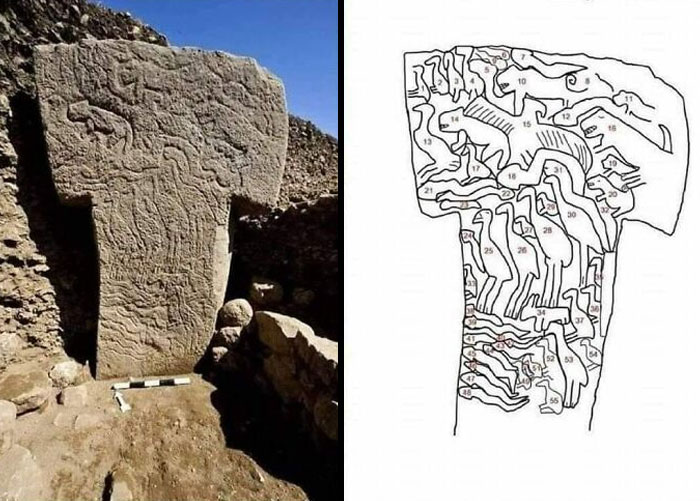
Image credits: Antique Archeology
#51 King Maya. Palenque. México
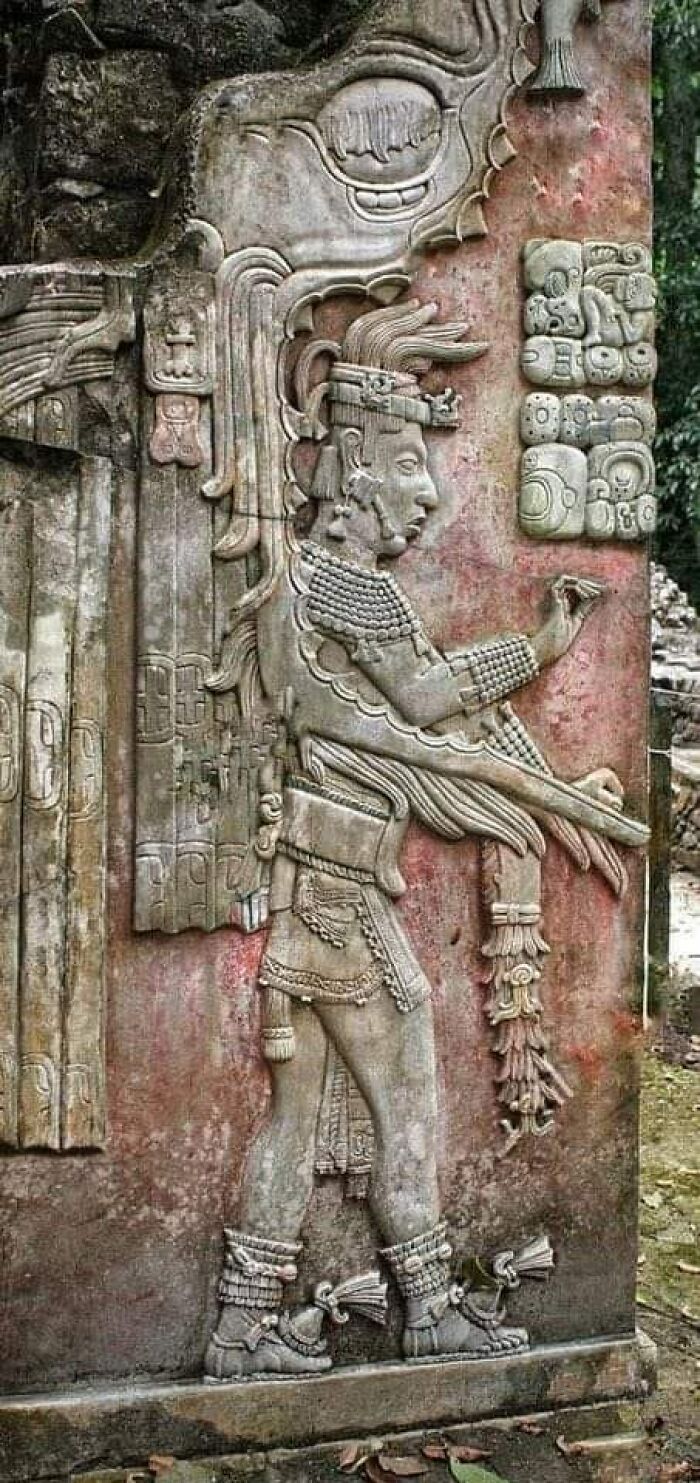
Image credits: Antique Archeology
#52 They Find In Germany A Sword From The Bronze Age Of More Than 3,000 Years Ago In An Exceptional State Of Conservation
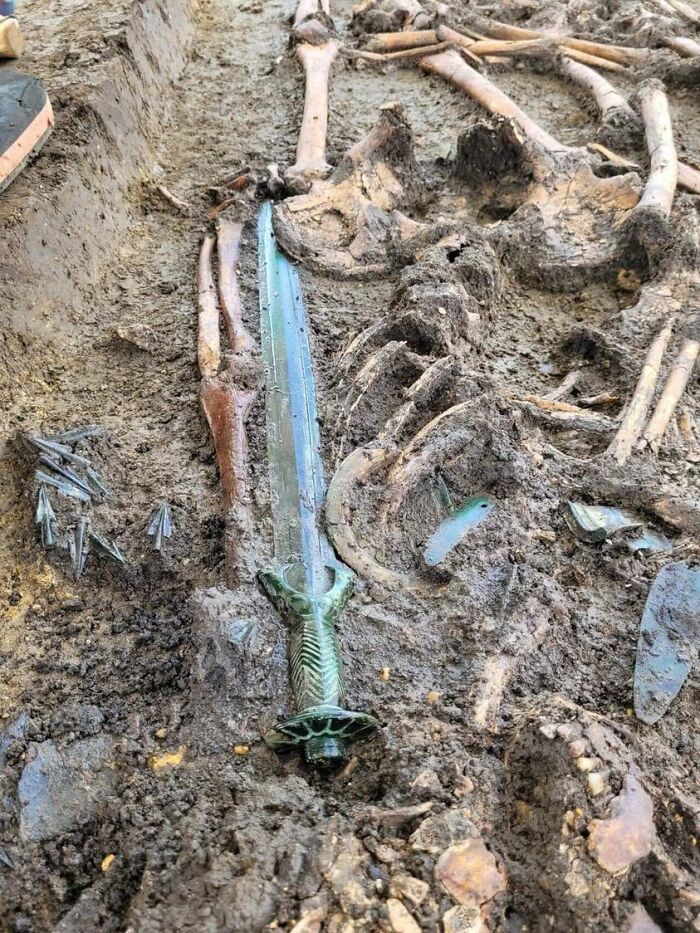
Image credits: Antique Archeology
#53 Fantastic Skill!!! Indian Ankus (Elephant Goad), Nayaka Period, Probably Early 17th Century, Length 70.14 Cm (27 5/8 In.). Museum Of Fine Arts Boston
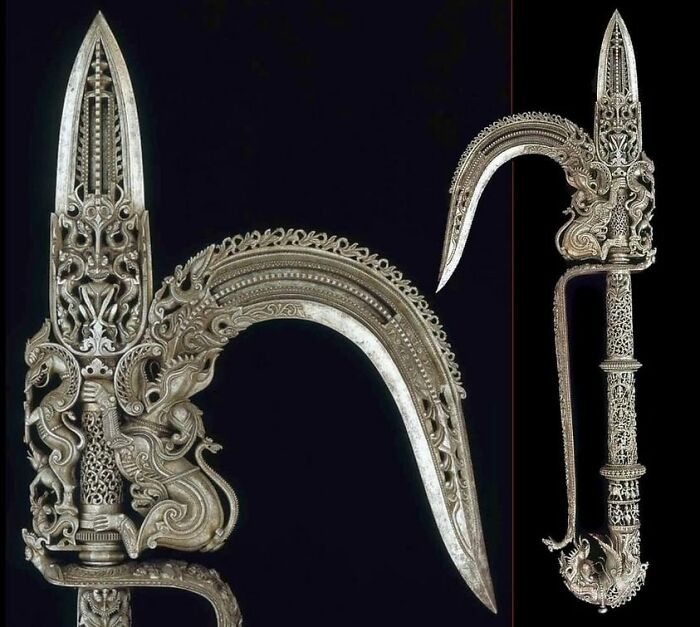
Image credits: Antique Archeology
#54
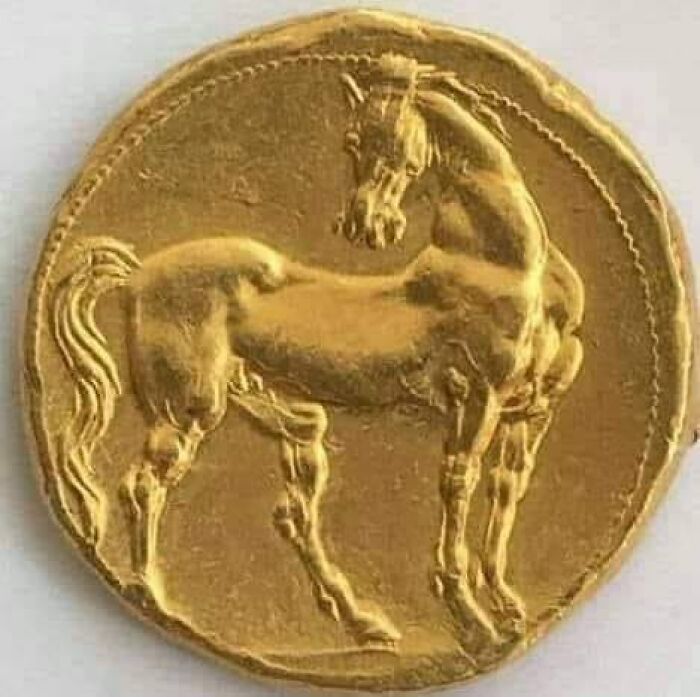
Image credits: Antique Archeology
#55 Ancient Roman Glass Bottles
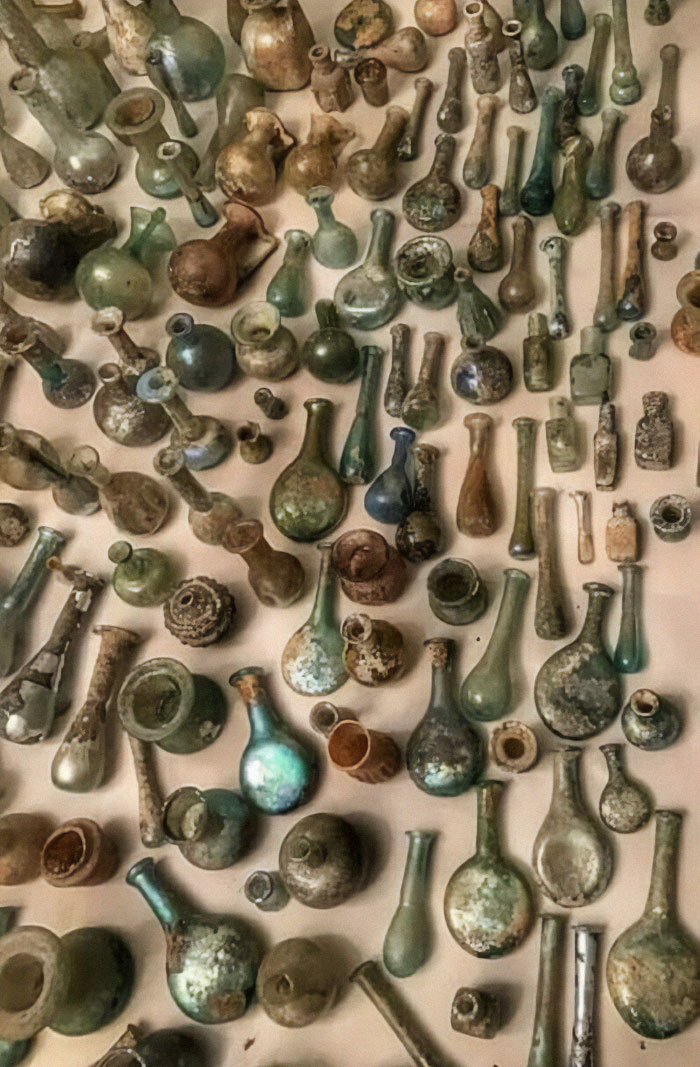
Image credits: Antique Archeology
#56 A Fortuitously Placed Fossil. A 320 Million Year Old Goniatite Fossil, County Clare, Ireland
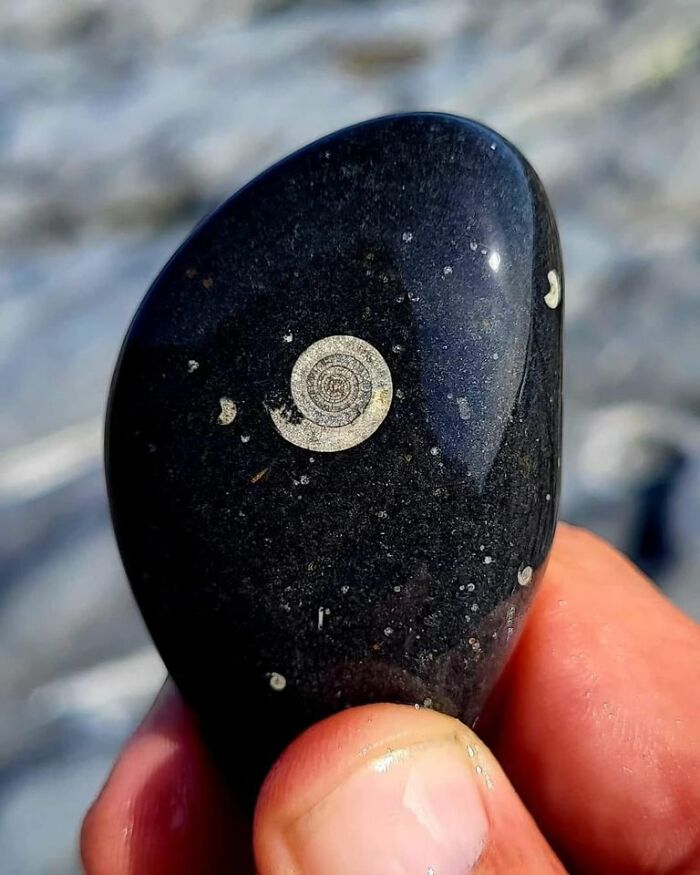
Image credits: Antique Archeology
#57 Directly From Ancient Rome, Carvilio’s Ring: The Excruciating Pain Of A Roman Mother For The Death Of Her Son
In 2000, during the removal of a high voltage pylon in a private property near Grottaferrata (a suburb of Rome) archaeologists found two sarcophagi, which contained the remains of the noble Aebutia Quarta and her son Carvilio Gemello, who lived in the first century after Christ. Carvilio died prematurely at the age of about eighteen, in mysterious circumstances (perhaps from poisoning).
After losing the only male child, the roman noblewoman built a wonderful sarcophagus, with accurate finishing and refined inscriptions for his son.
Due to the floral ornaments placed at the entrance and inside, the archeological site today is known as the “Hypogeum of the garlands”.
When Ebuzia died (probably at the age of 40 or 50), she was buried in the same place of her son Carvilio.
The two nobles were embalmed (probably because they were followers of the cult of Isis, which was very fashionable at the time). Thanks to this procedure it was possible to find one of the most important and amazing jewels of ancient Rome that has come down to us: Aebutia wears a magnificent band ring.
The gold frame has a cavity where a chiseled miniature portrait has been placed, perfect in its details. It probably represents the young Carvilio Gemello, with wavy hair, intense gaze, fine lips, pronounced nose and bare bust.
The amazing miniature is wrapped in rock crystal (hyaline quartz, defined by the ancient Romans as “acentetus, the color of clear water”), which has given a timeless depth to the boy’s expression.
It was certainly the pain and love for Carvilius that prompted her to commission the precious jewel from an imperial master of goldsmithing (who almost certainly lent his services to the emperor himself, given the magnificence of the find).
The ring of Carvilio, separated from its owner after millennia, is now on display at the Archaeological Museum of Palestrina, Italy.
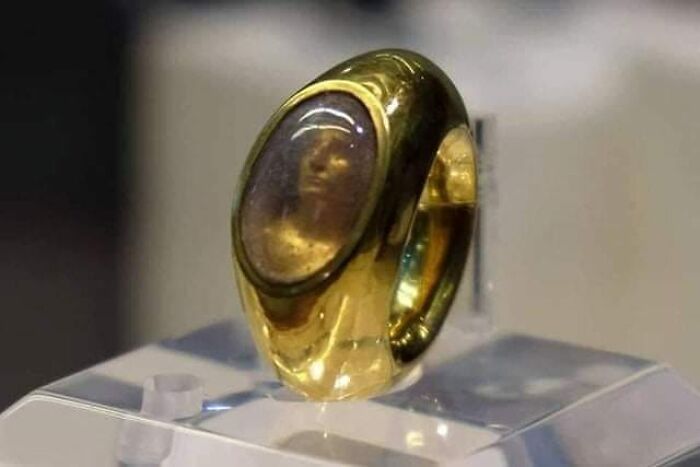
Image credits: Antique Archeology
#58 Ancient Bridge
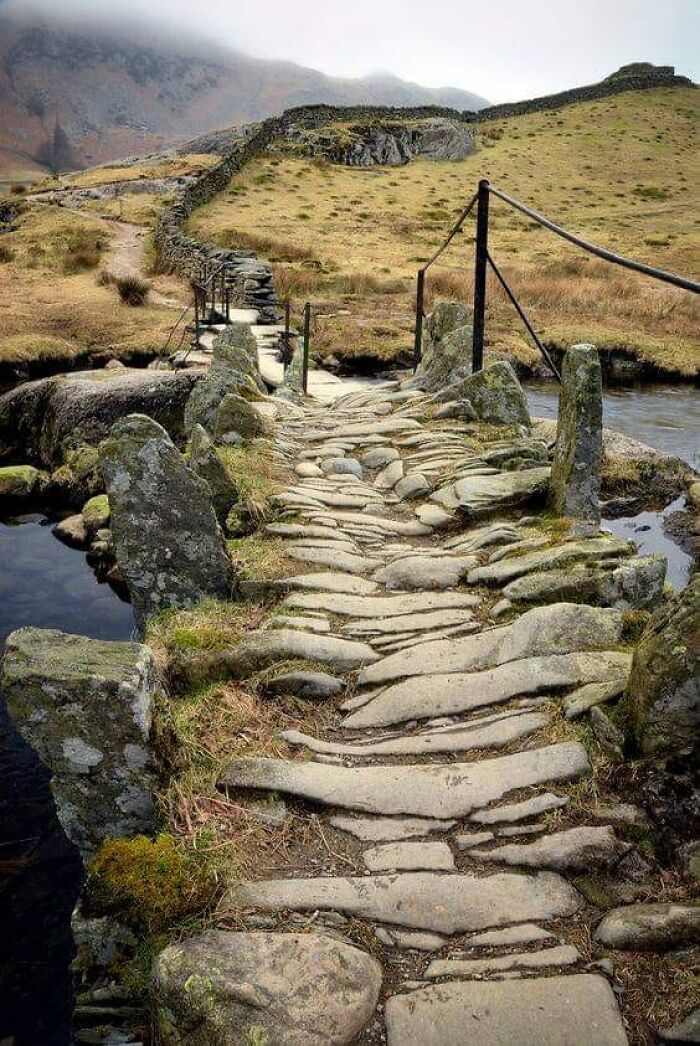
Image credits: Antique Archeology
#59 A Priceless 2500-Year-Old Gold Rhyton From Ancient #persia. It’s 2 Kilograms. National Museum Of Ancient Persia
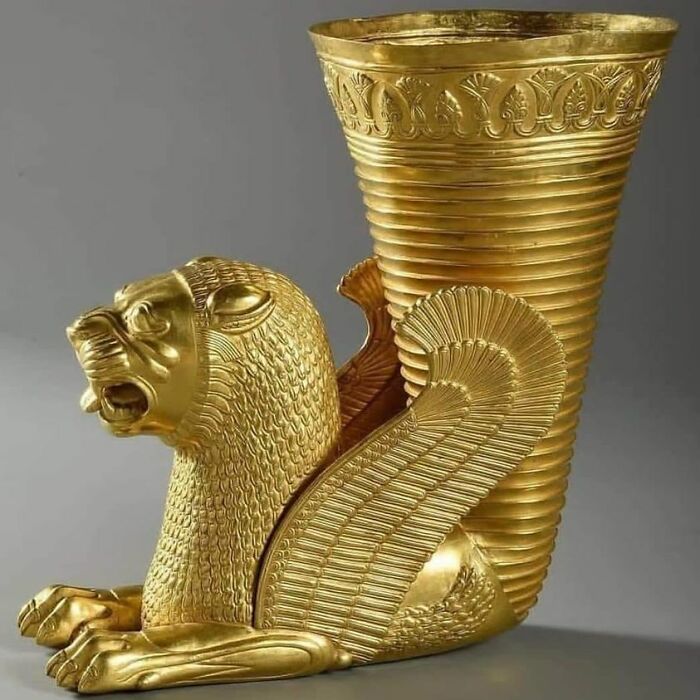
Image credits: Antique Archeology
#60 Gold Bull’s Head Bowl Known As “Attila’s Cup”, Part Of The Nagyszentmiklós Treasure Uncovered In Hungary, Dates To The 6th Century Ad
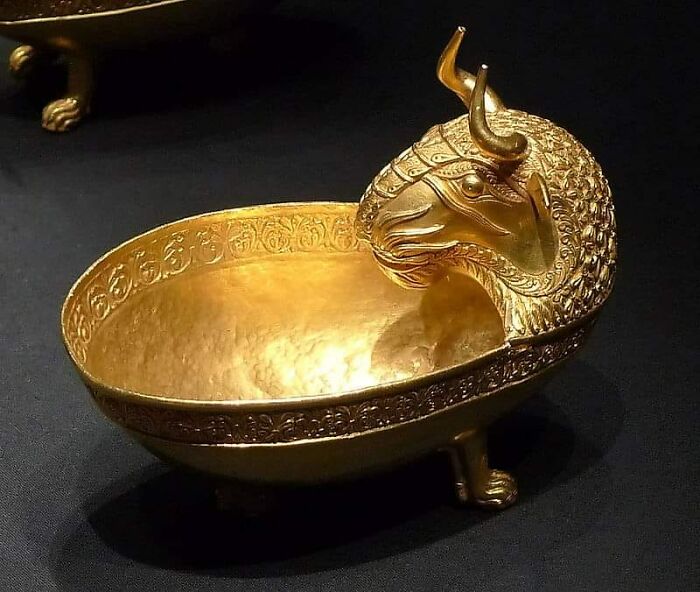
Image credits: Antique Archeology
#61 Intricately Carved Violin Of Domenico Galli, 1687
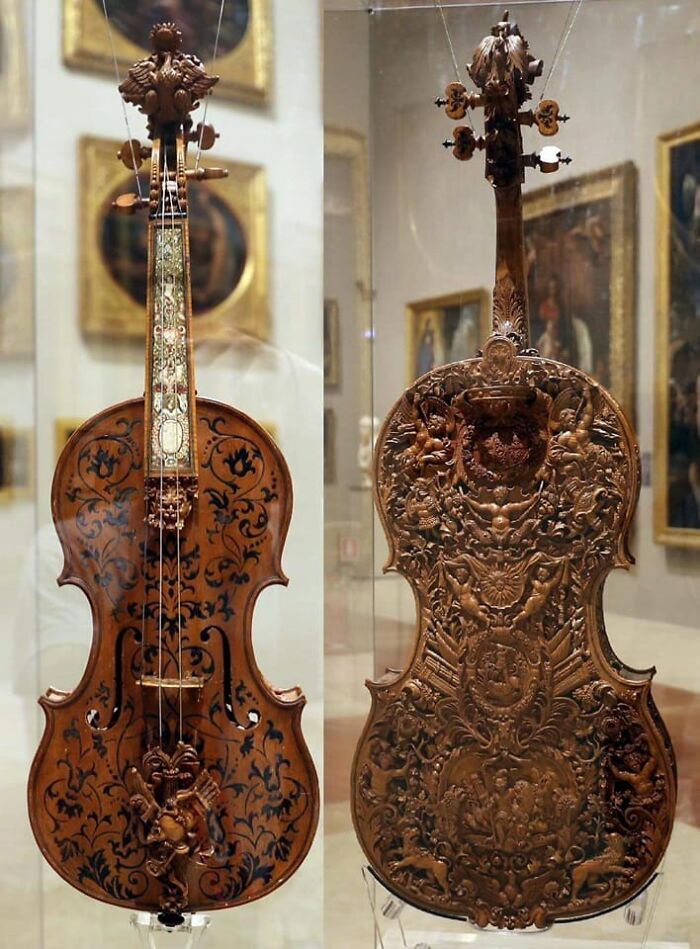
Image credits: Antique Archeology
#62 This Small Bronze Purse (4.3×3.3 Cm) Was Found With Six Gold Coins Still Inside In The Celtic Oppidum (Settlement) At Manching, Germany
It was originally sealed with an organic material, presumably a leather strap. Ca. 200 BCE
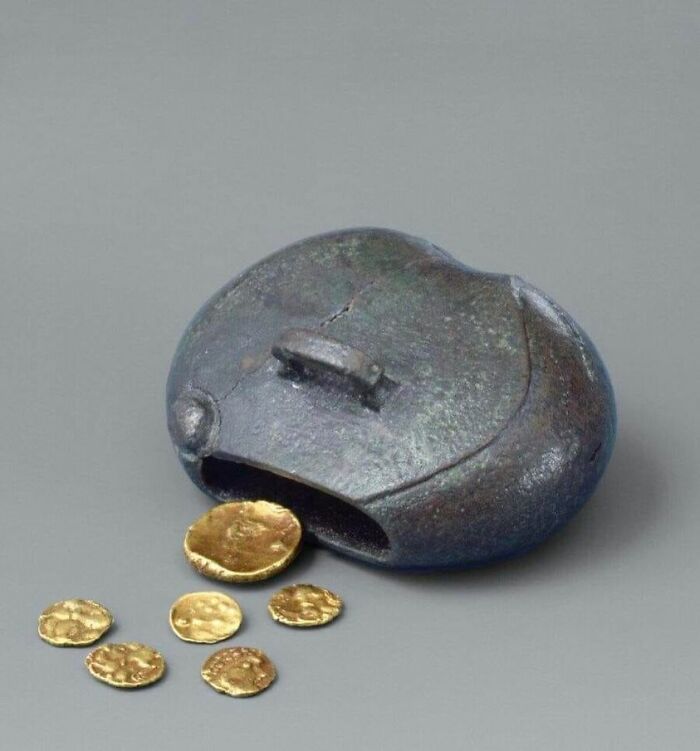
Image credits: Antique Archeology
#63 Finding The Foot Of The Roman Emperor Marcus Aurelius Statue In Sagalassos Ancient City In Ağlasun, Burdur
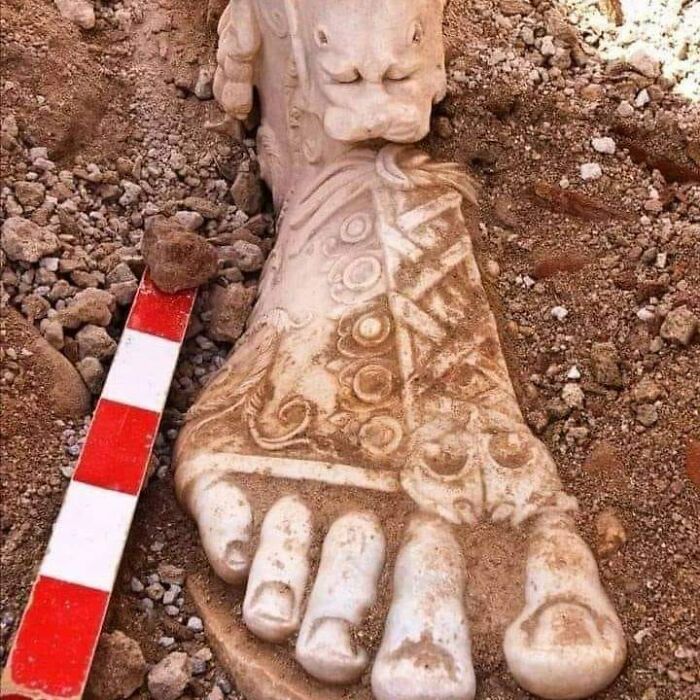
Image credits: Antique Archeology
#64 French Sapper Officer’s Sword, Circa 1800
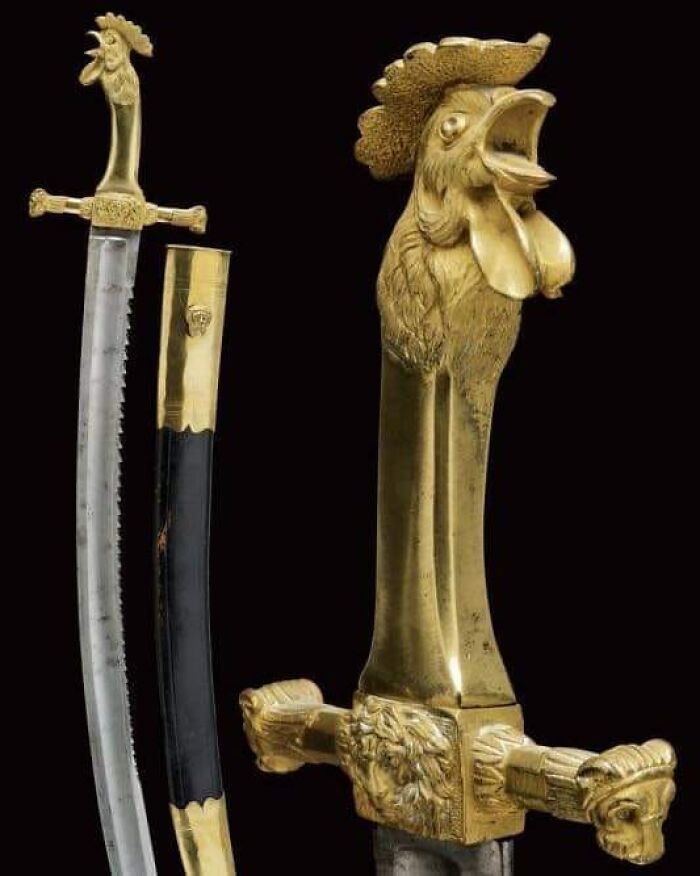
Image credits: Antique Archeology
#65 Celebrating The Remarkable Discovery Of The “Golden Treasure”: 18.5kg Of Roman Gold And 2,500 Glittering Pieces
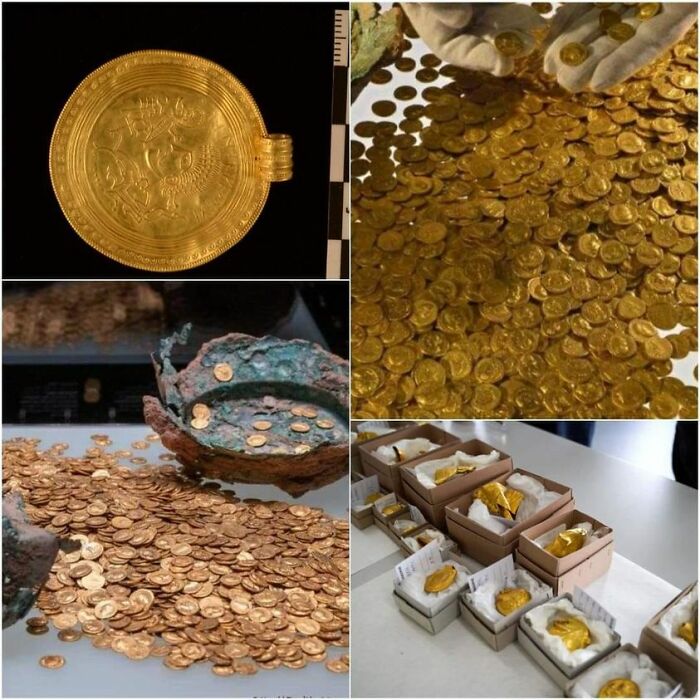
Image credits: Antique Archeology
#66 A Hoard Of Nearly 2,000 Gold Coins That Were Minted By Rulers Of The Fatimid Kingdom A Millennium Ago Were Unearthed Off The Coast Of Israel
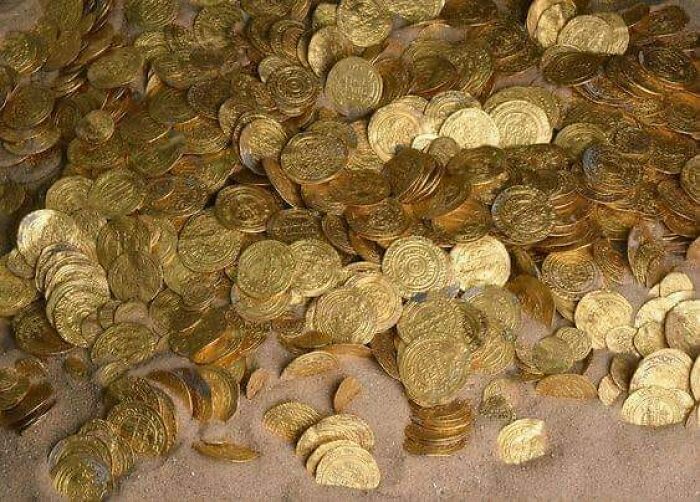
Image credits: Antique Archeology
#67 505 Gold Coins, Weighing 1.716 Kg, Were Found In A Vessel During Digging At The Jambukeswarar Temple In Thiruvanaikaval, Tiruchirappalli District Recently
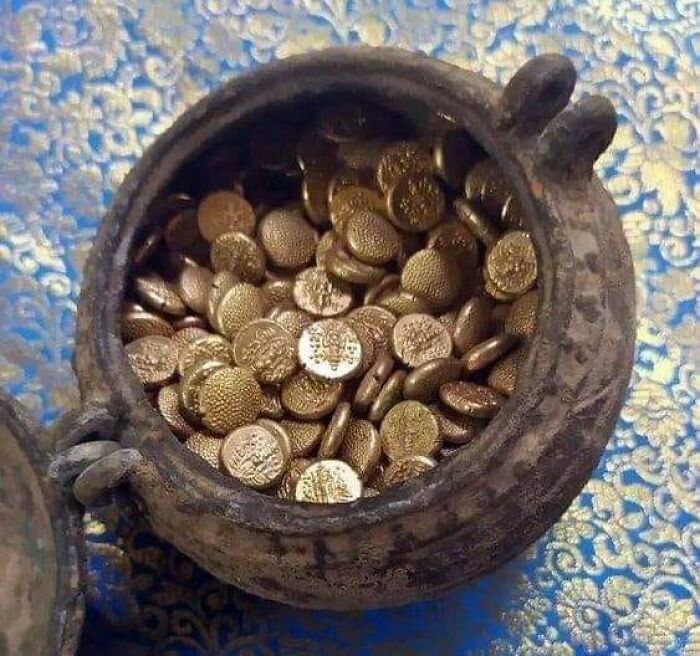
Image credits: Antique Archeology
#68 Archaeological Discovery In Israel On August 2, 2009, A Researcher In The Caves Found 120 Roman Gold, Silver And Bronze Coins Dating From Ad 132-35
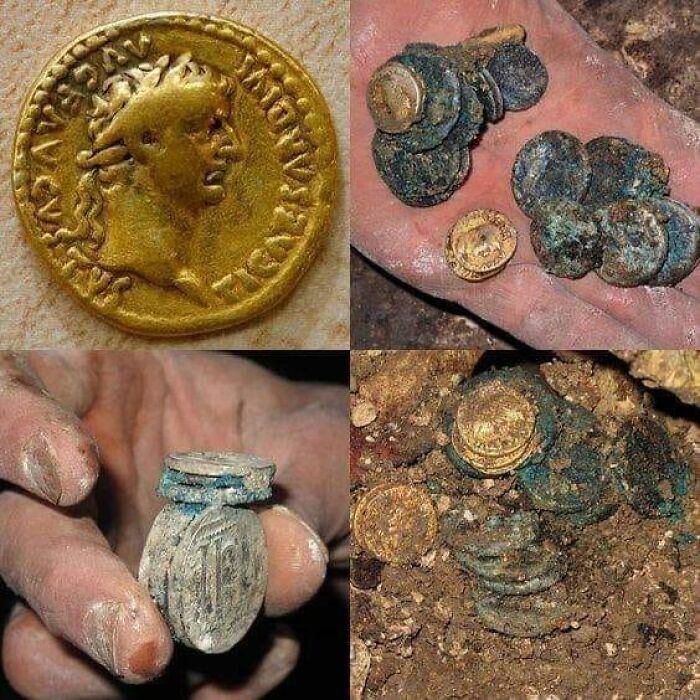
Image credits: Antique Archeology
#69
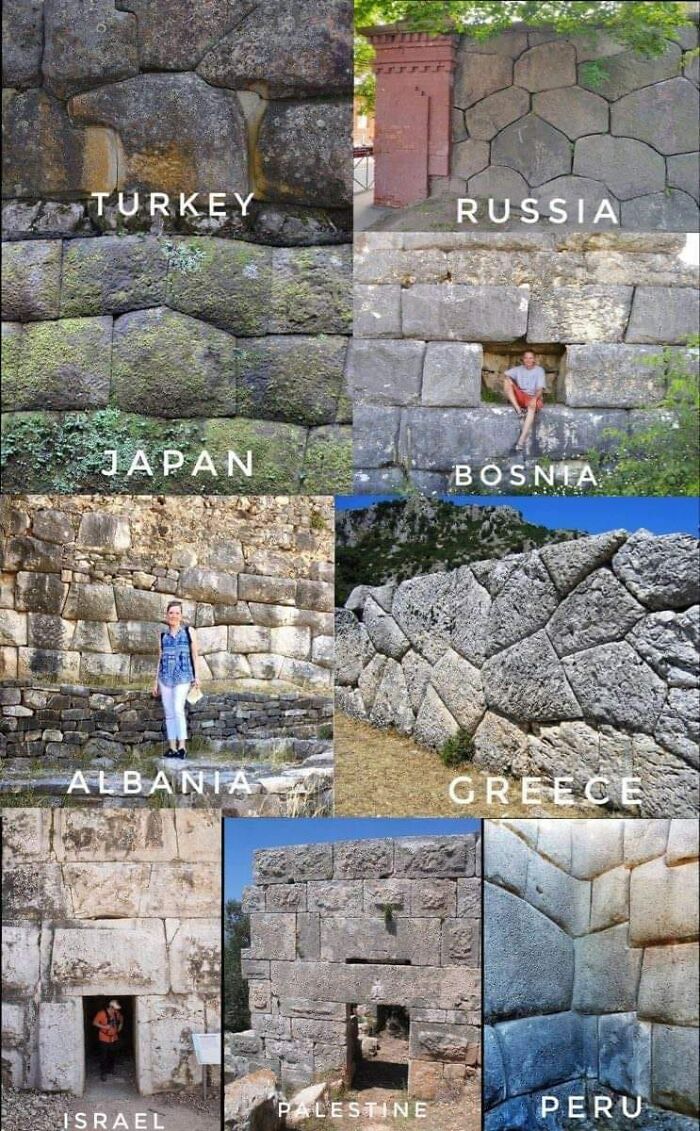
Image credits: Antique Archeology
#70 Tomb Of Hector
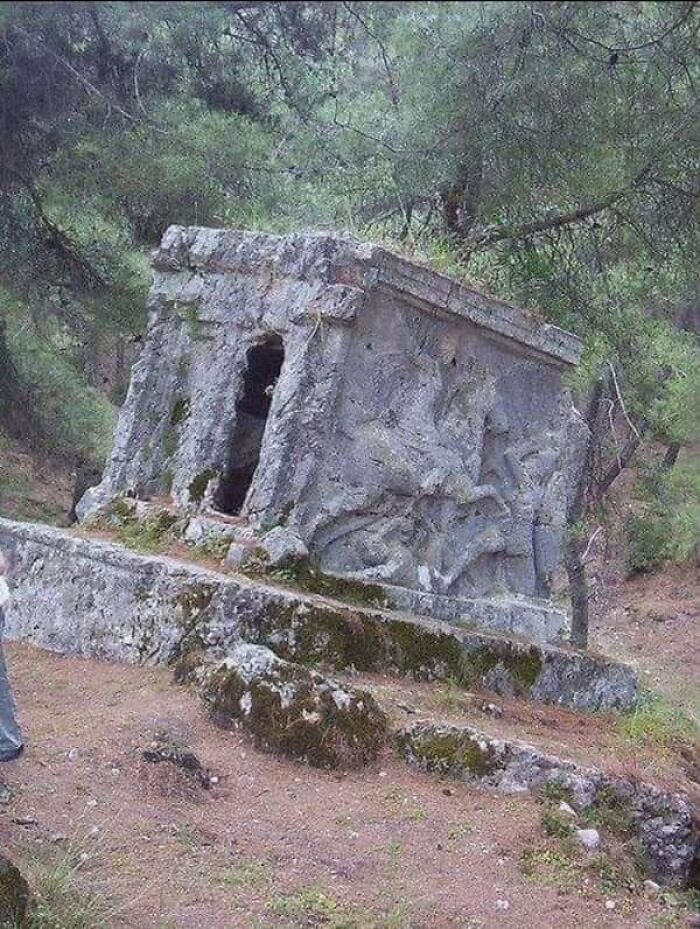
Image credits: Antique Archeology
#71 A Perfectly Preserved Section Of The Via Flaminia Roman Road, Discovered At A Depth Of 0.90m During Planning Of A New Water Pipeline In Riano
The Flaminian Way struck north from Rome, over the Apennines to the Adriatic coast
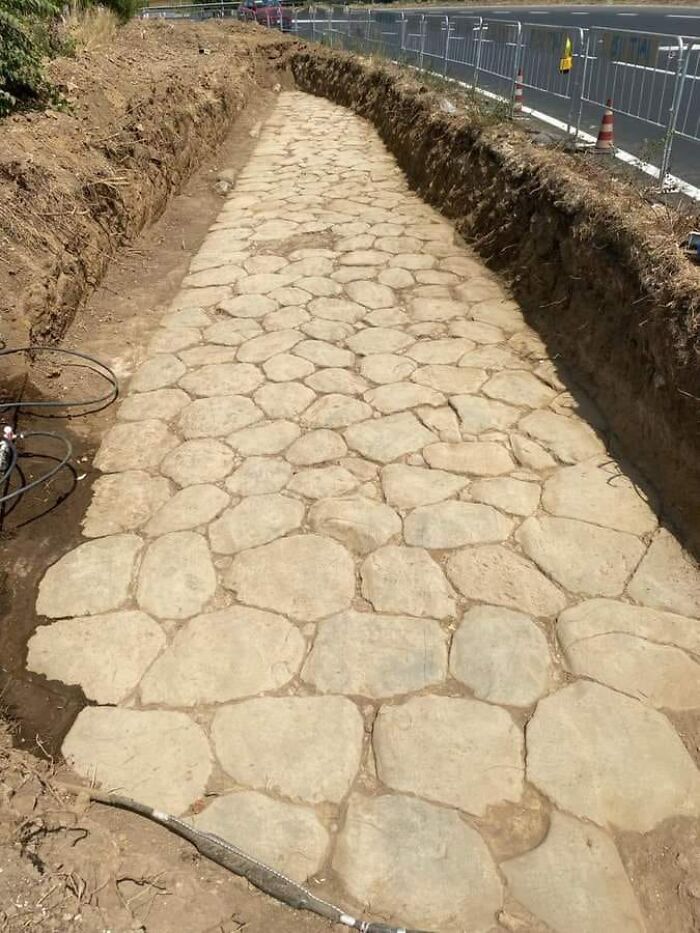
Image credits: Antique Archeology
#72 10th Century House In Iran
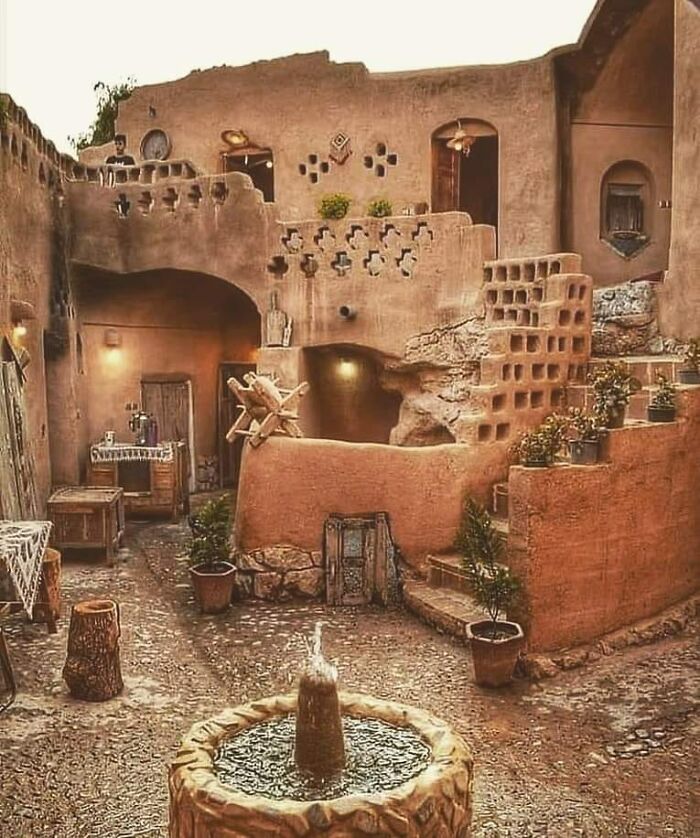
Image credits: Antique Archeology
#73 Ruins Of Pompeii, Naples, Italy
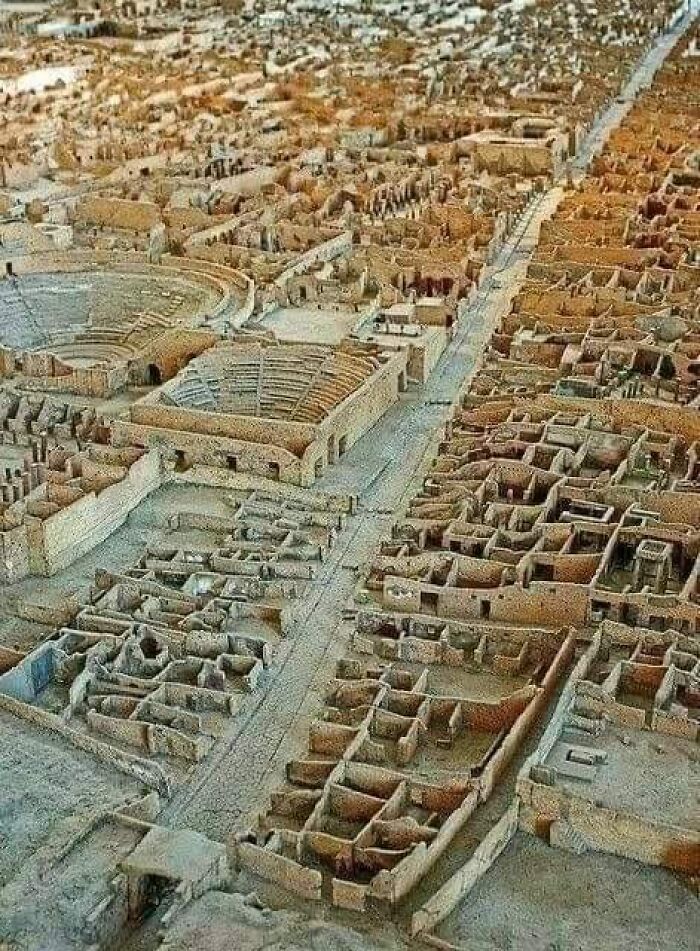
Image credits: Antique Archeology
#74 A 7000-6000 Year Old Burial Of A Young Woman (Aged Around 20 At The Time Of Her Death) And Her Newborn Baby From Vedbaek, Denmark
By her head, 200 red deer teeth and a bone hairpin, as well as red deer hooves which came from a skin that was wrapped around her. The child is cradled in the wing of a swan with 2 flint knives at its hip, suggesting the baby was a boy. It’s thought the pair died together in childbirth.
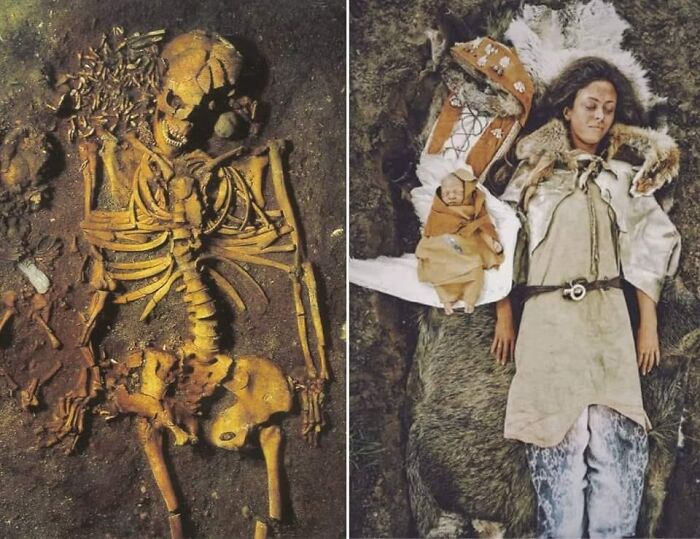
Image credits: Antique Archeology
from Bored Panda https://ift.tt/Rpbvq8z
via IFTTT source site : boredpanda